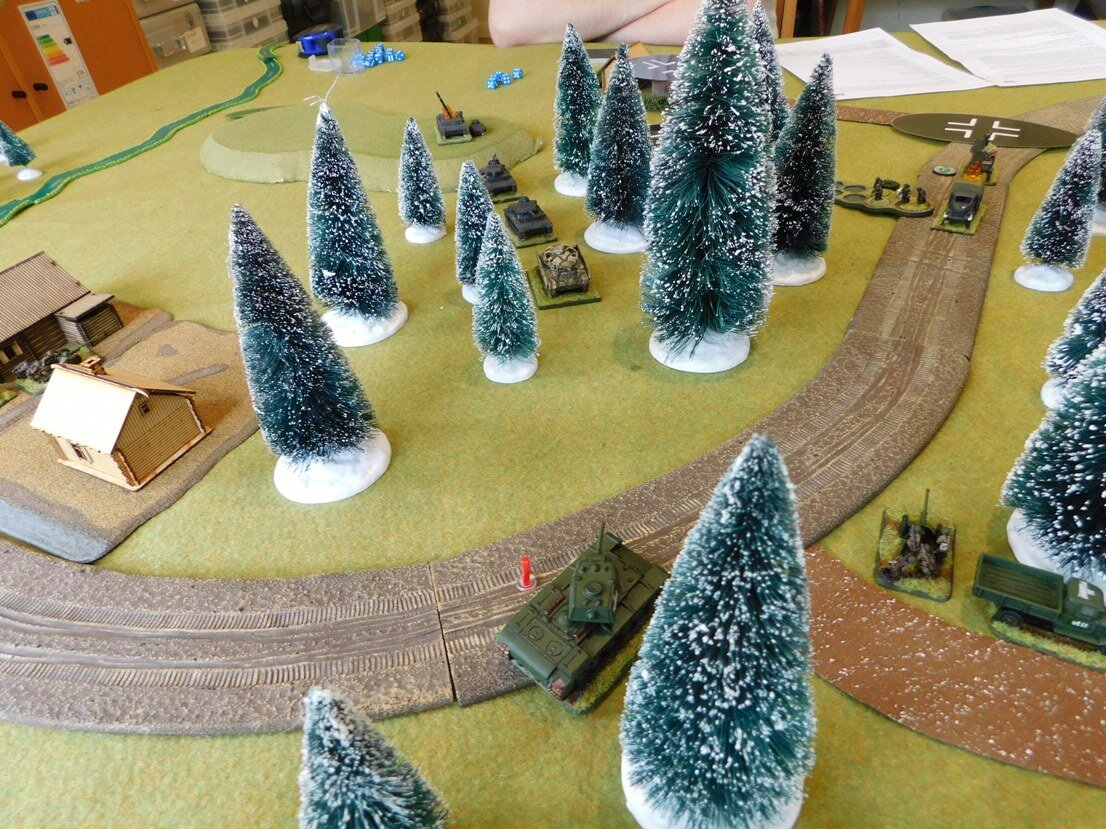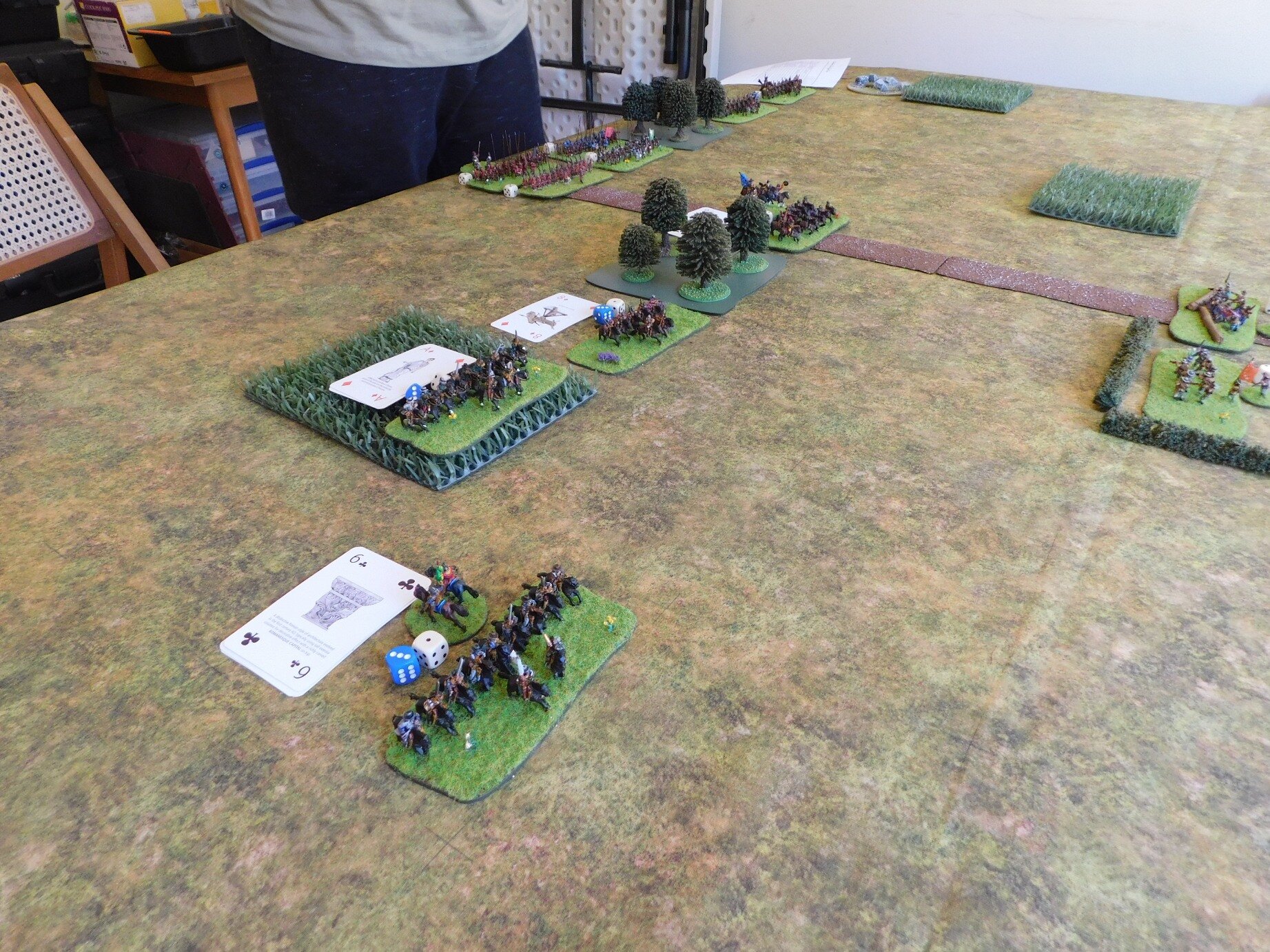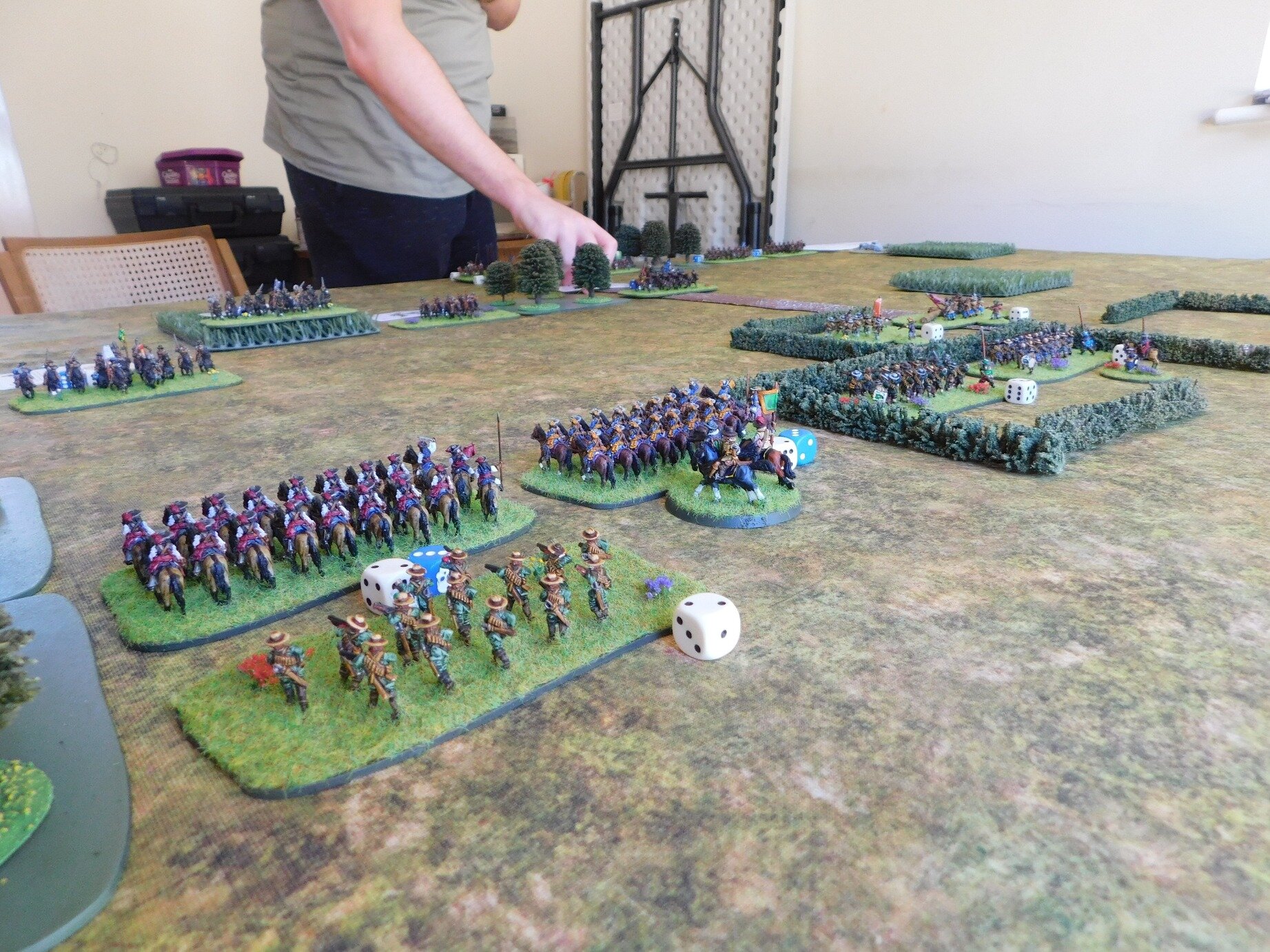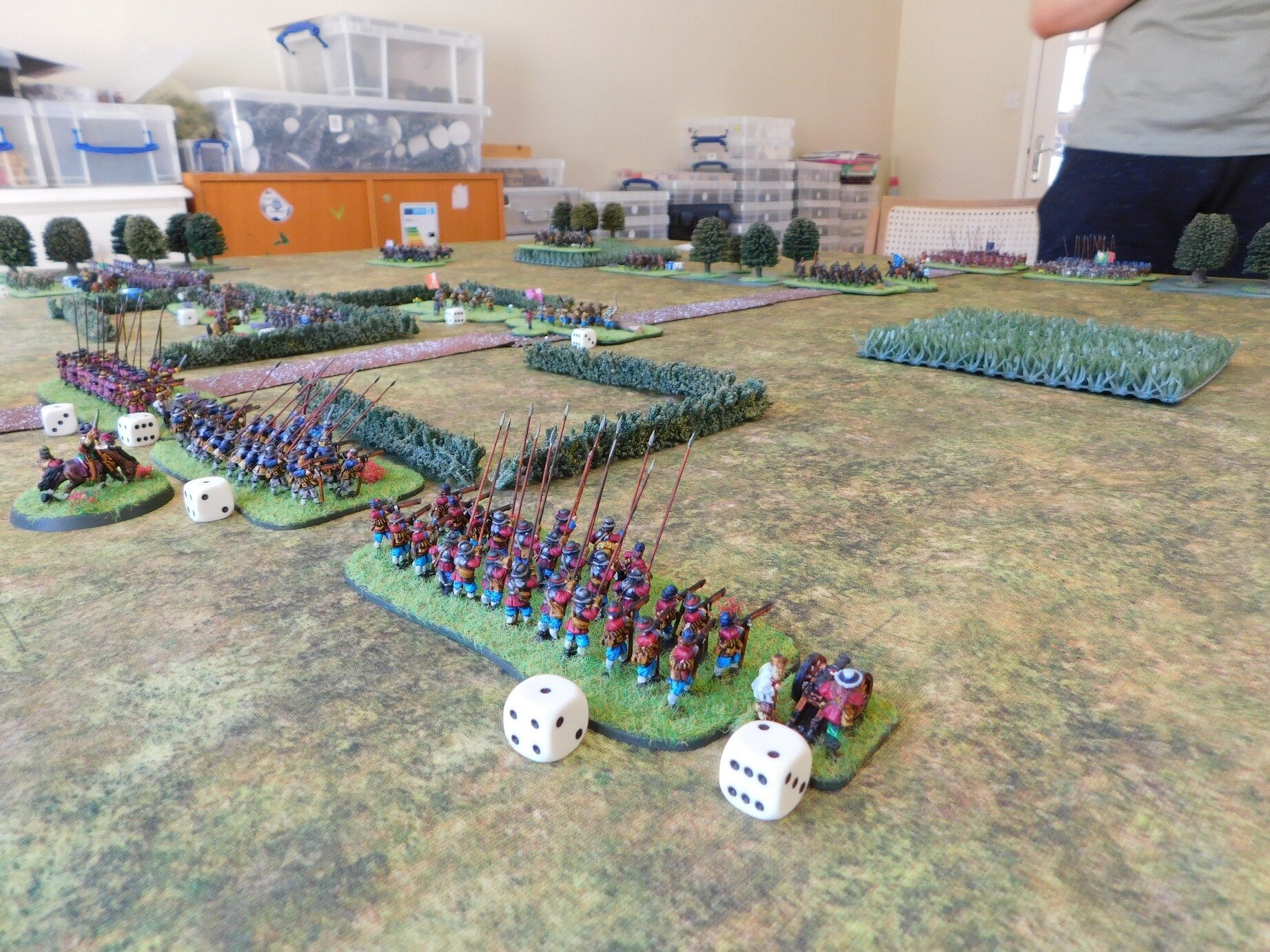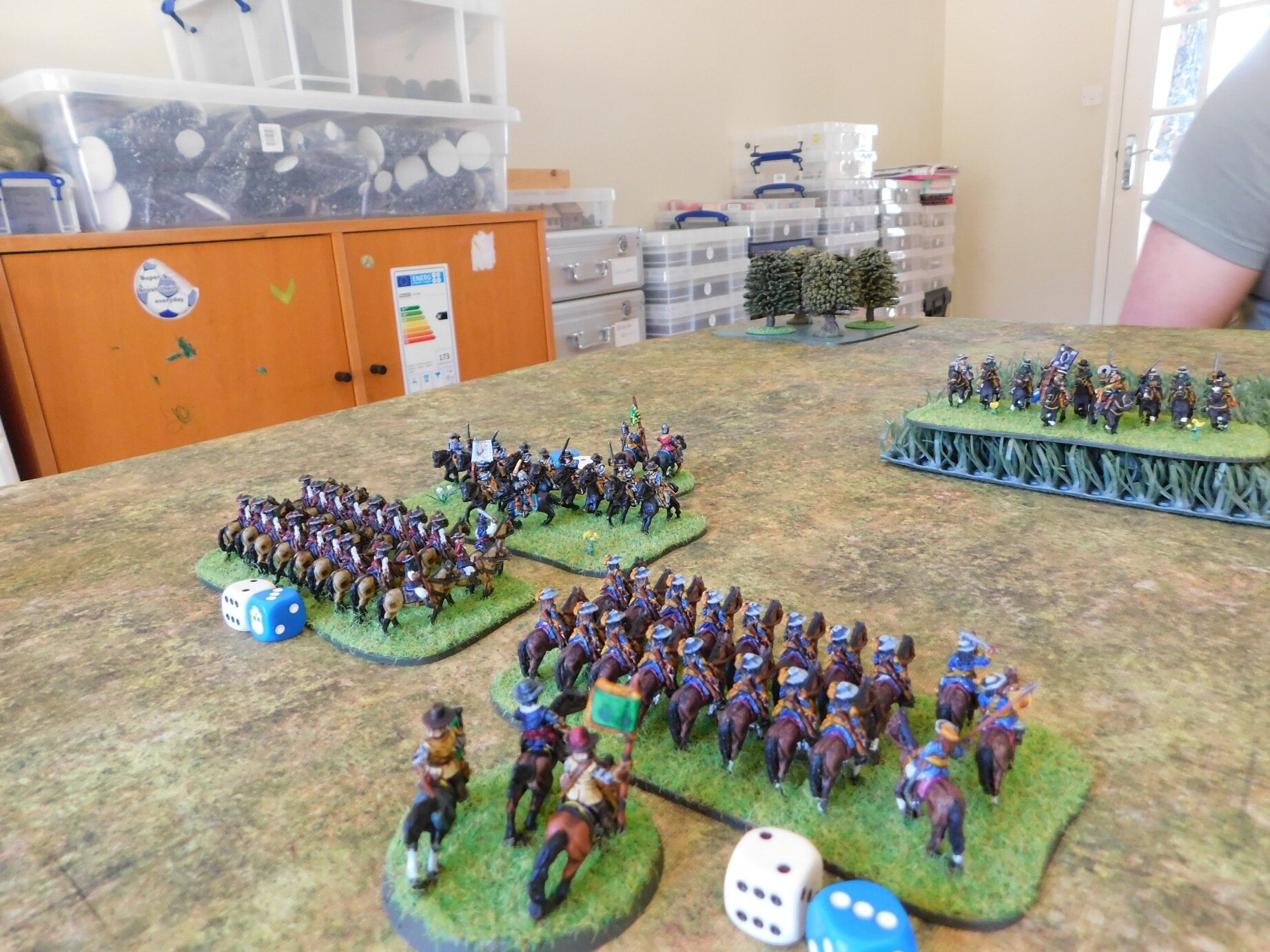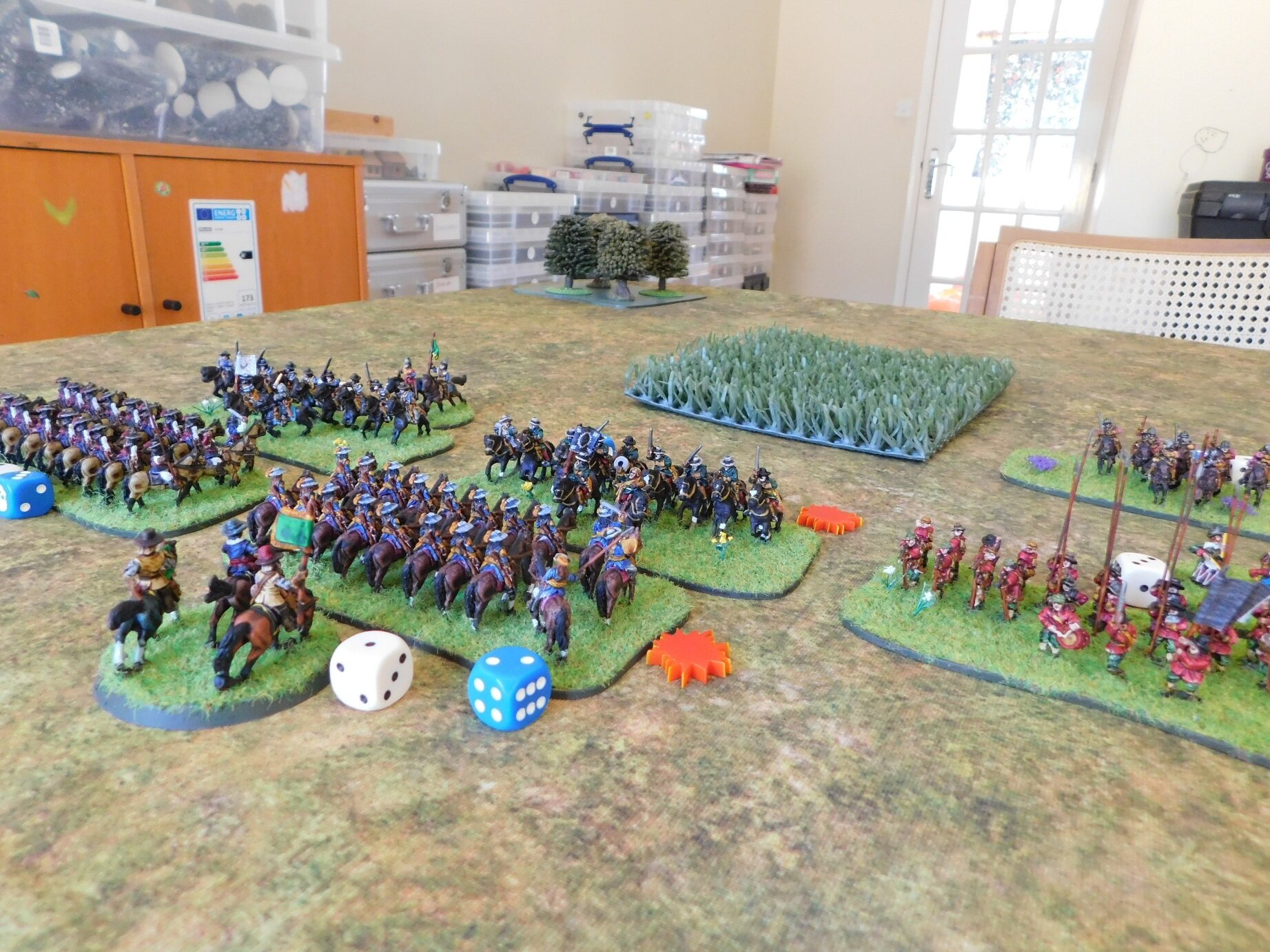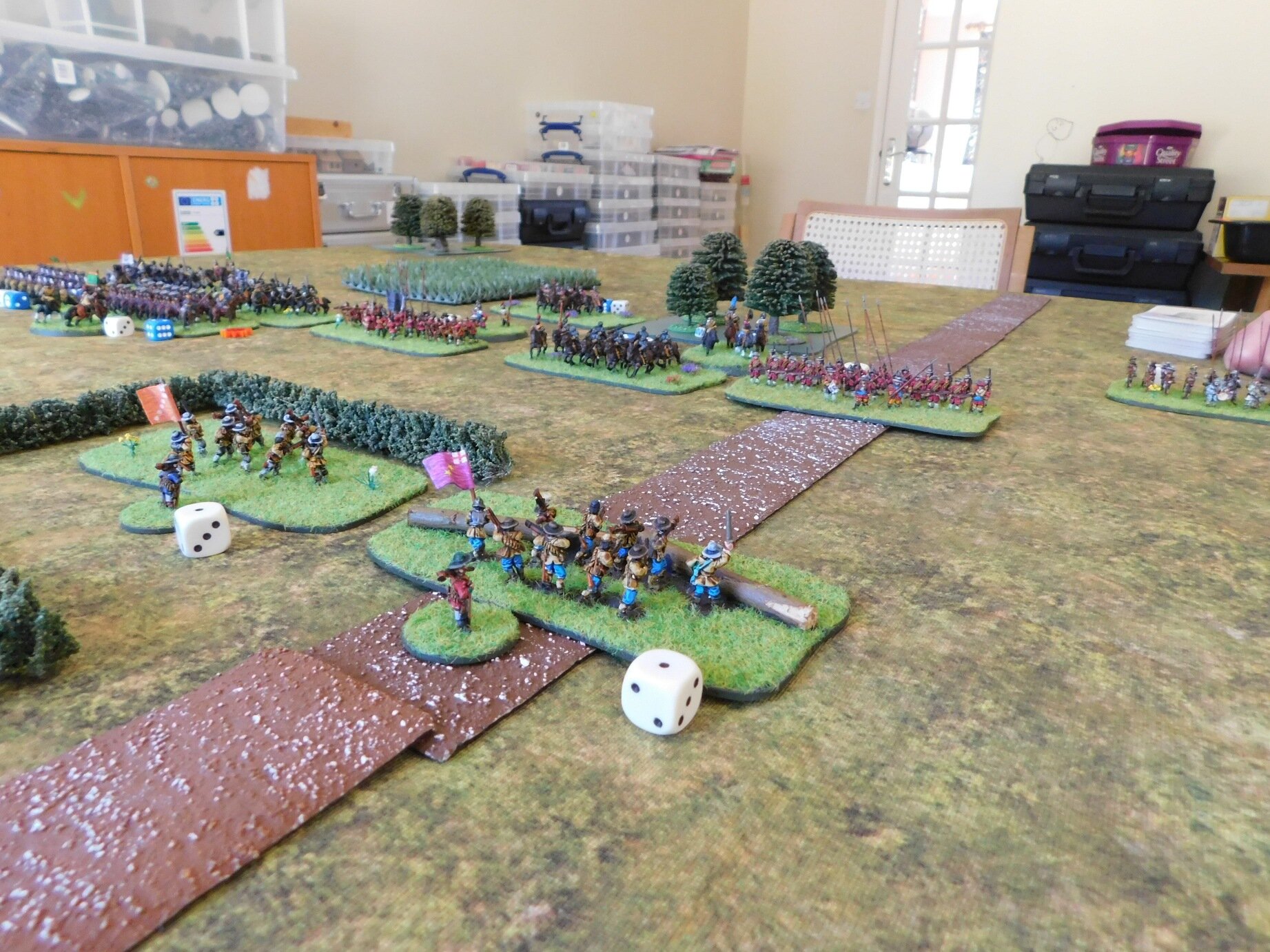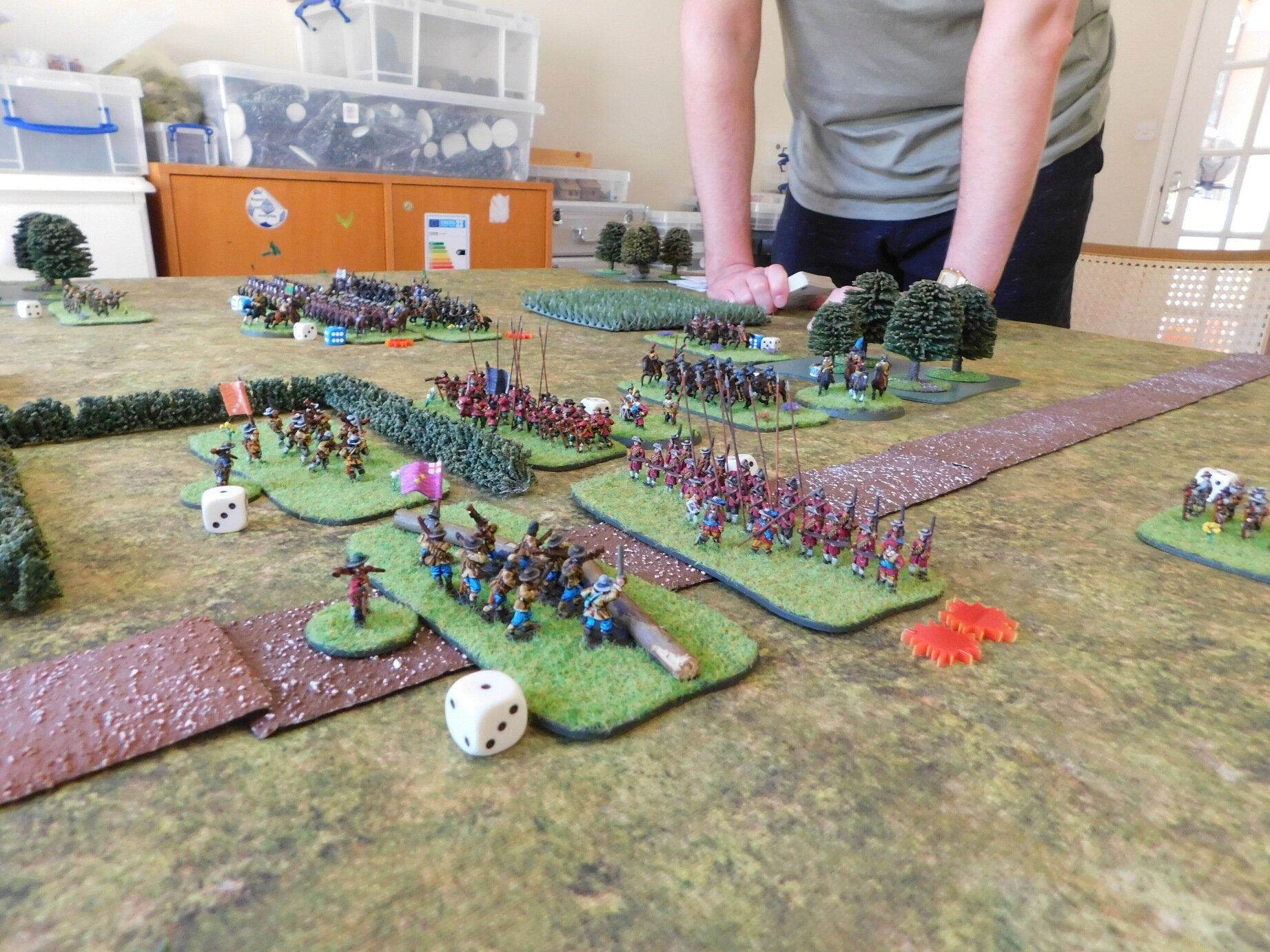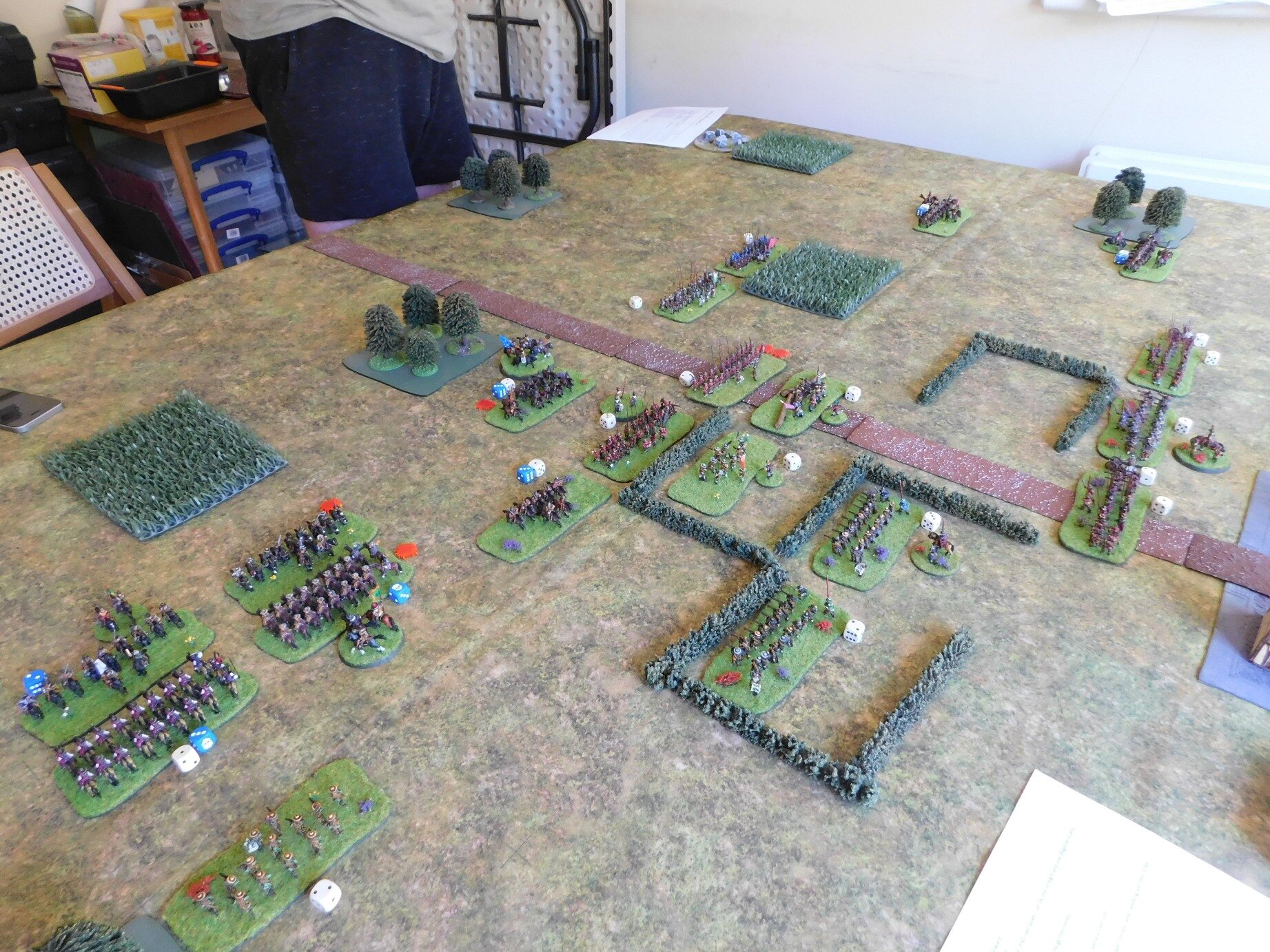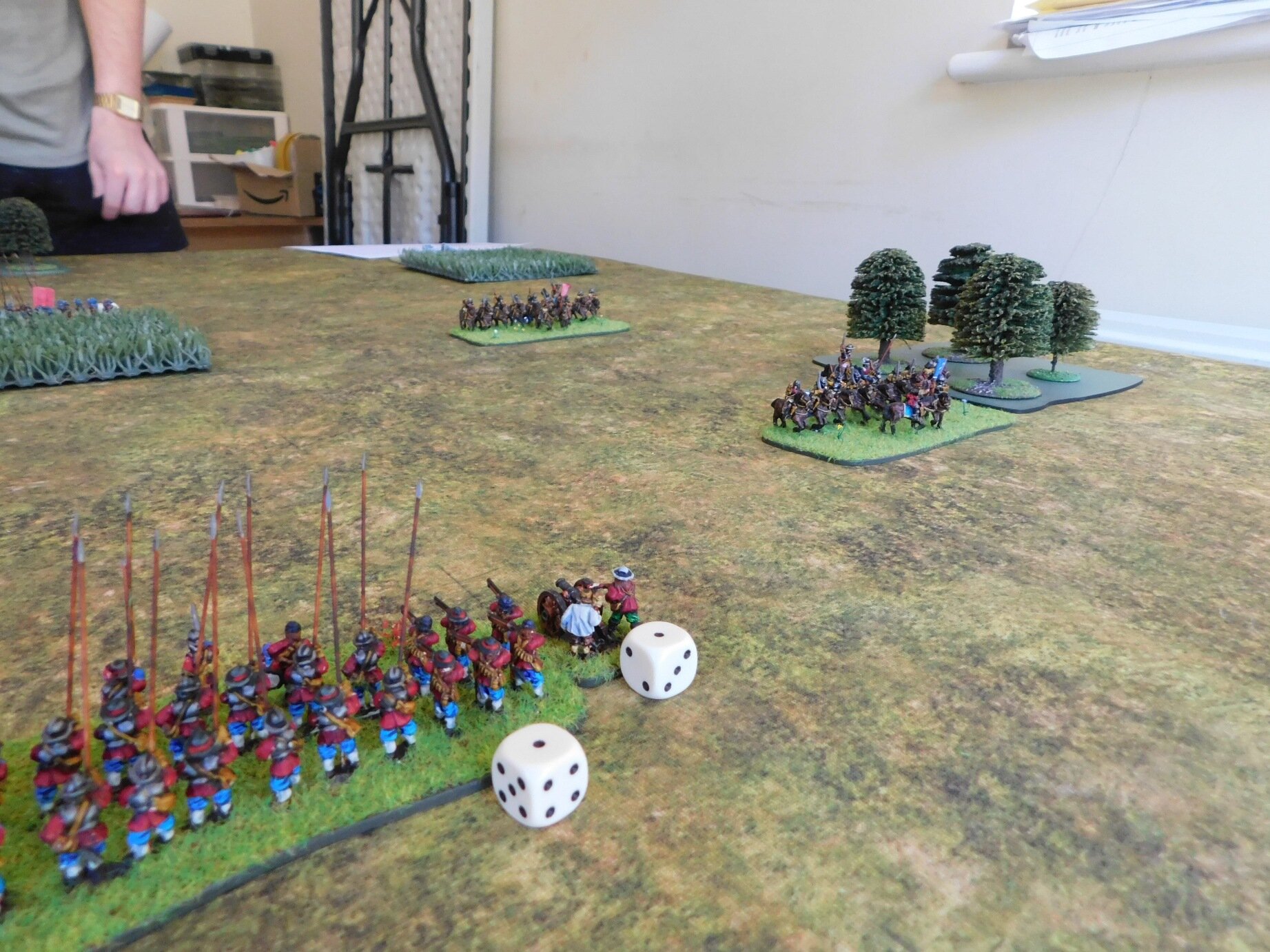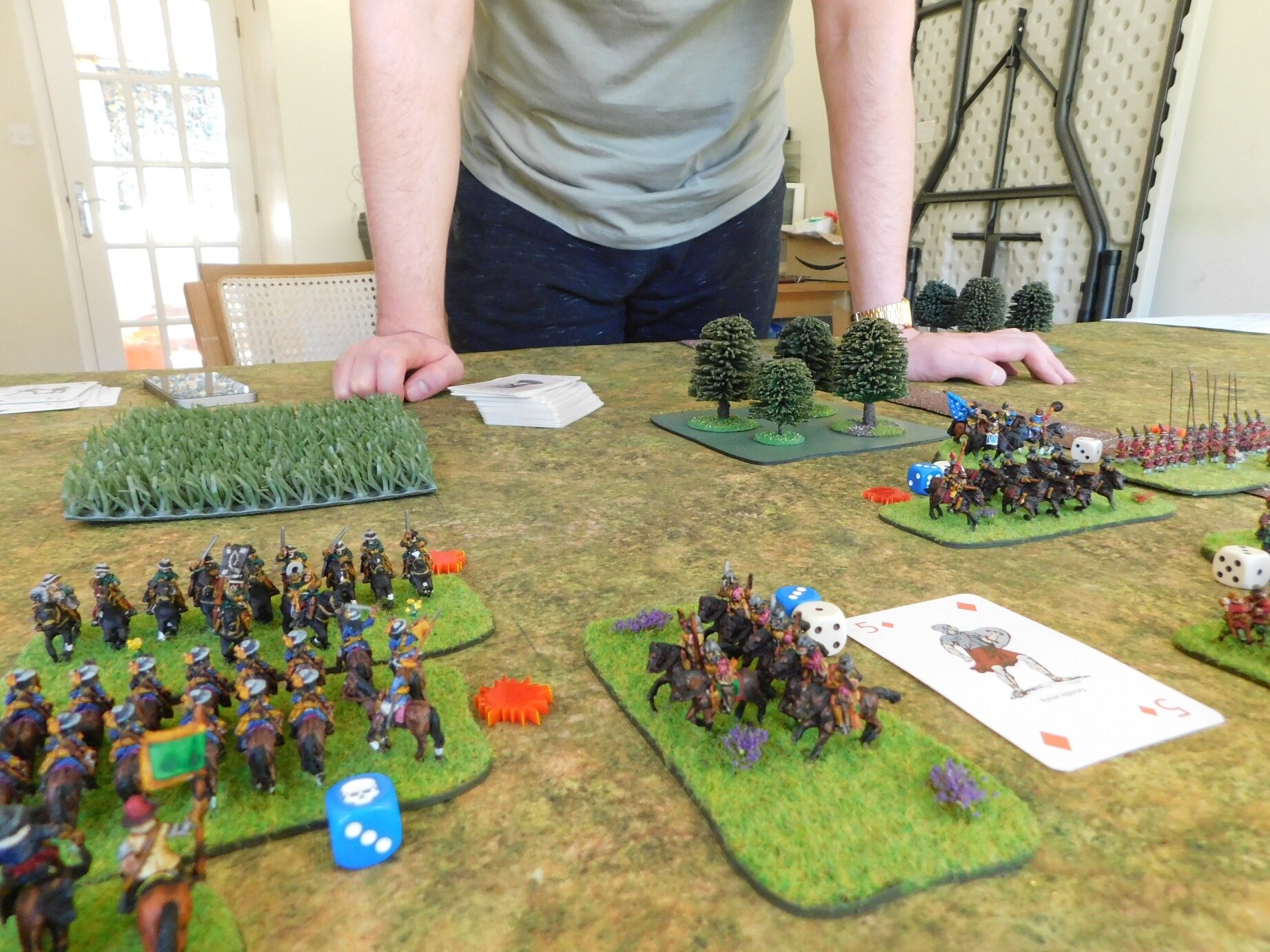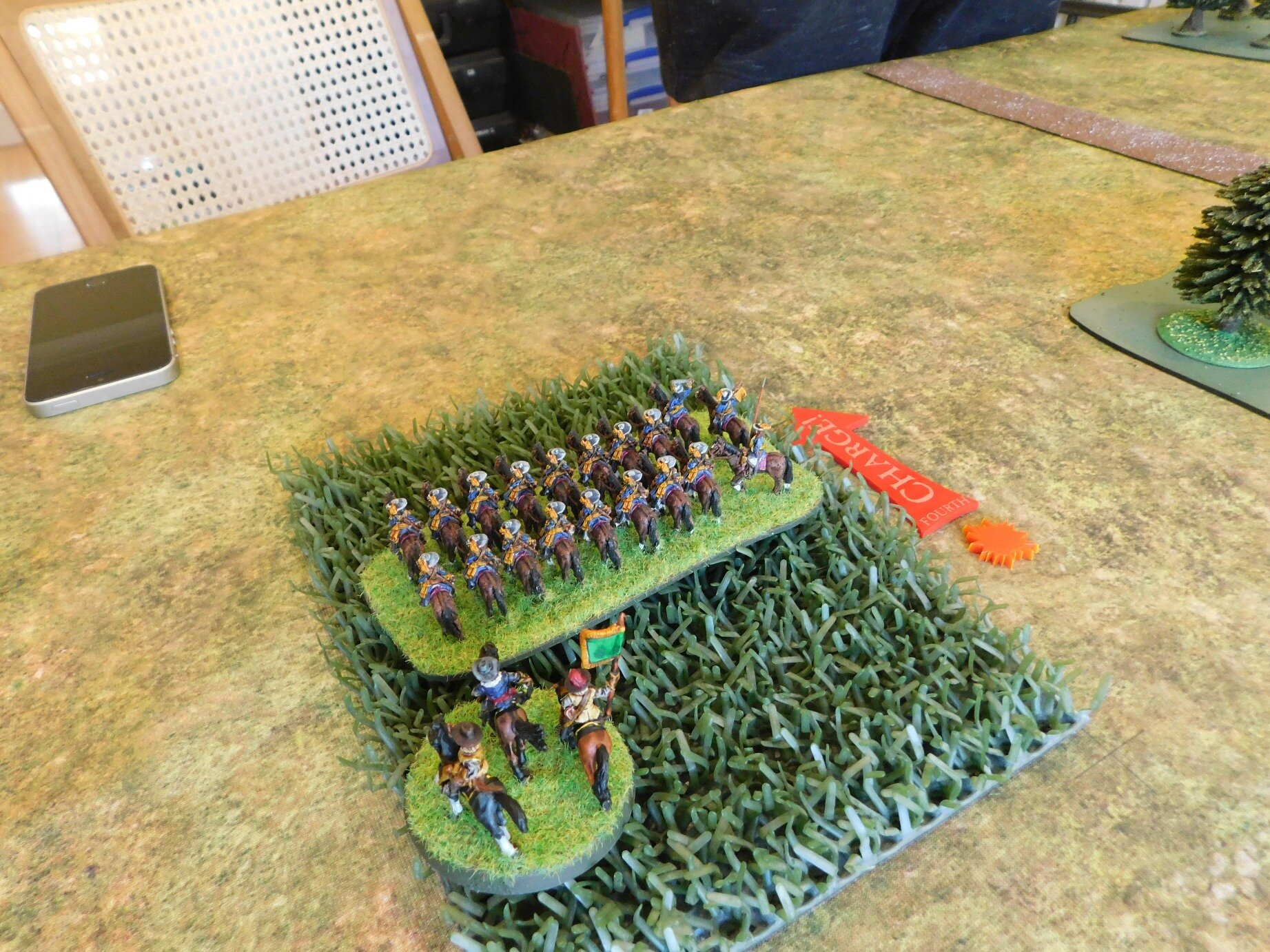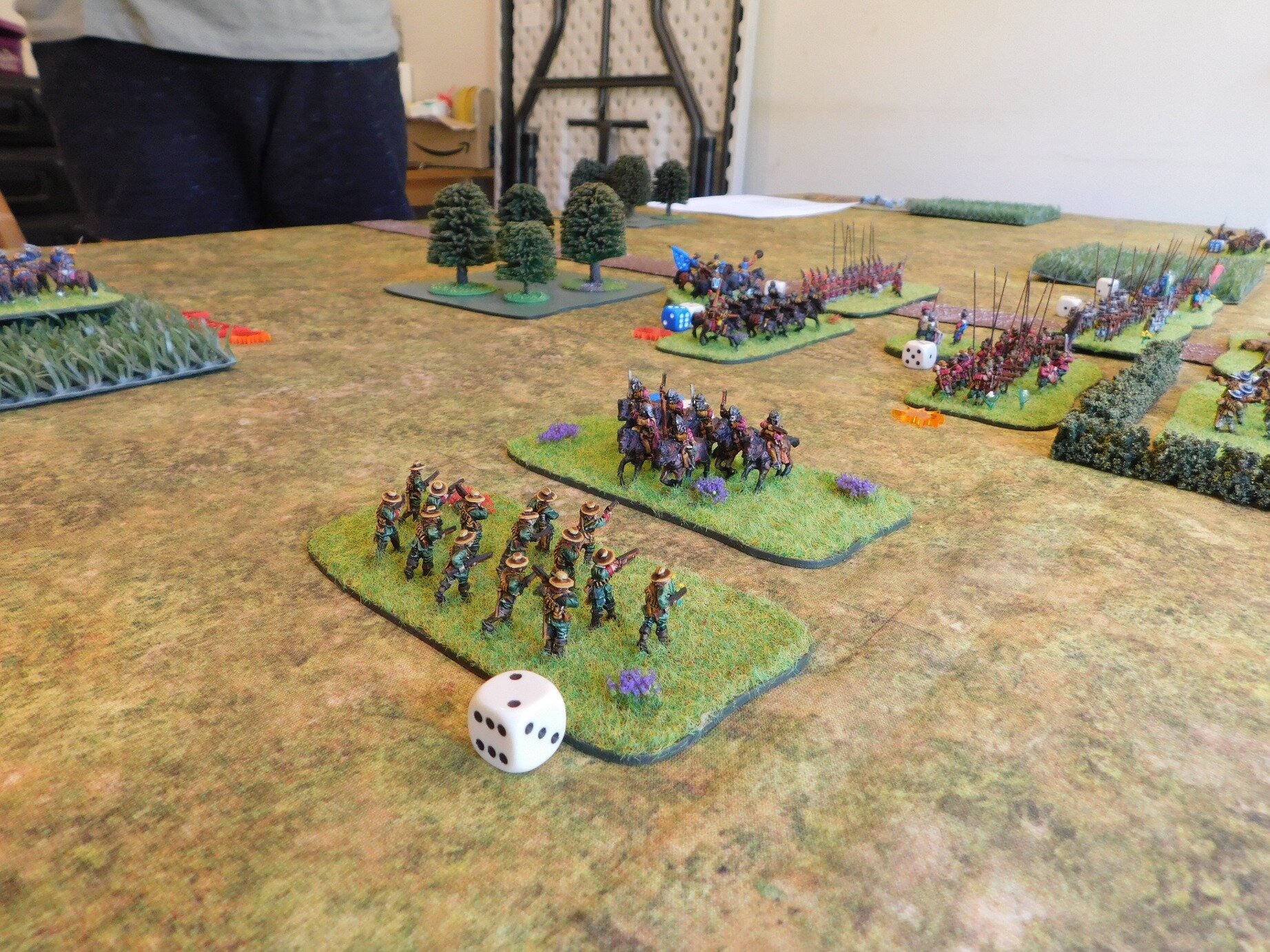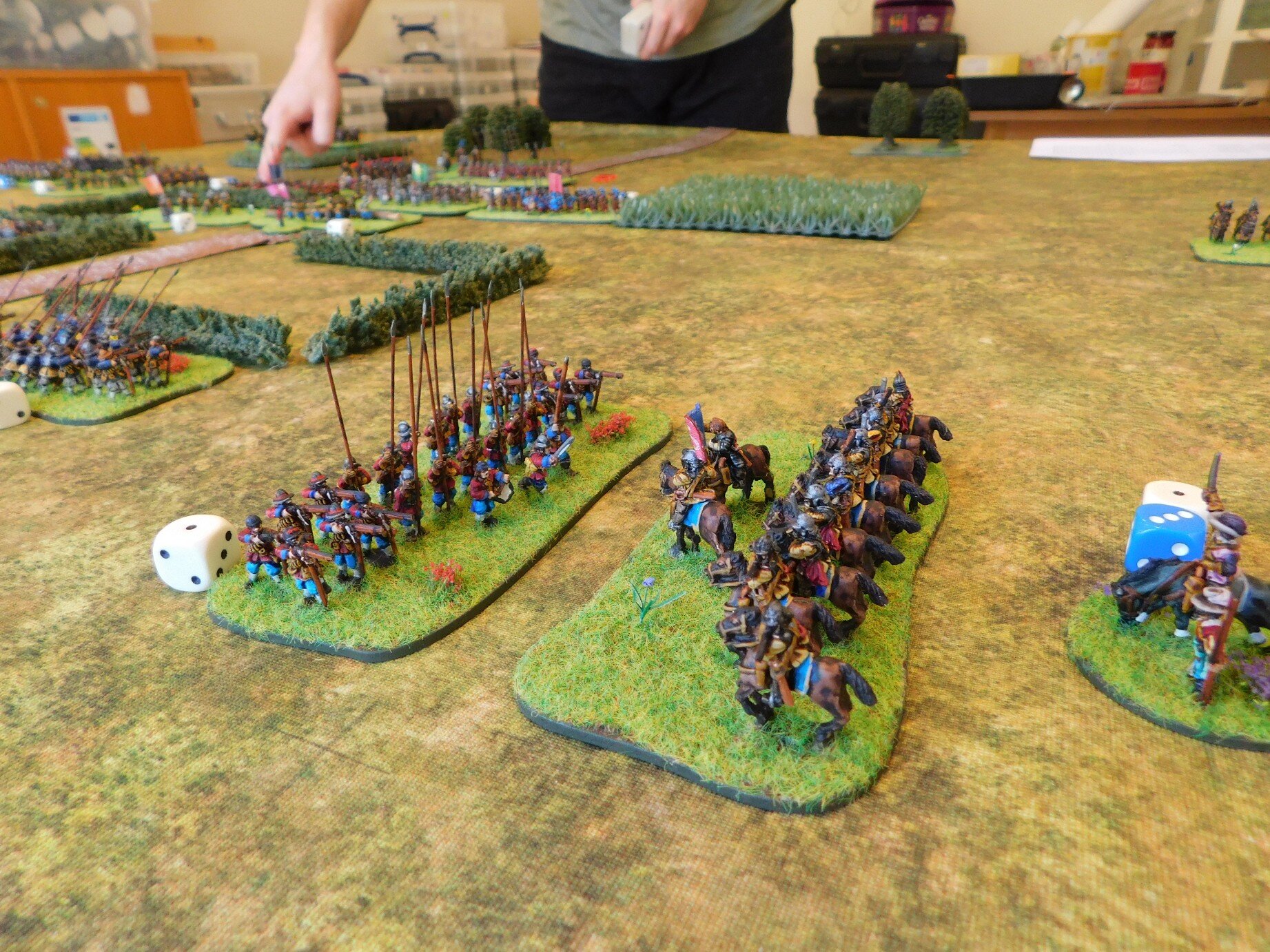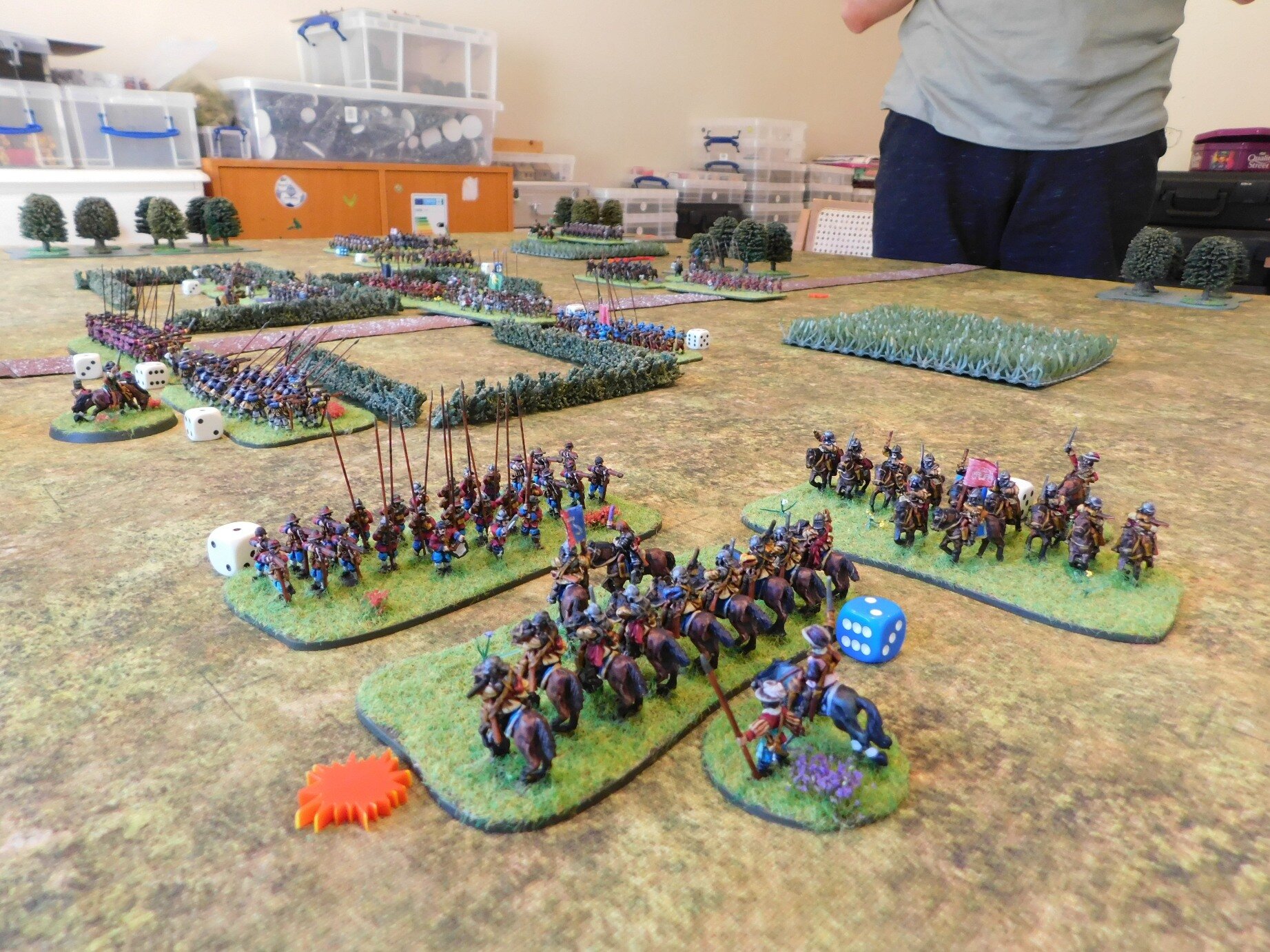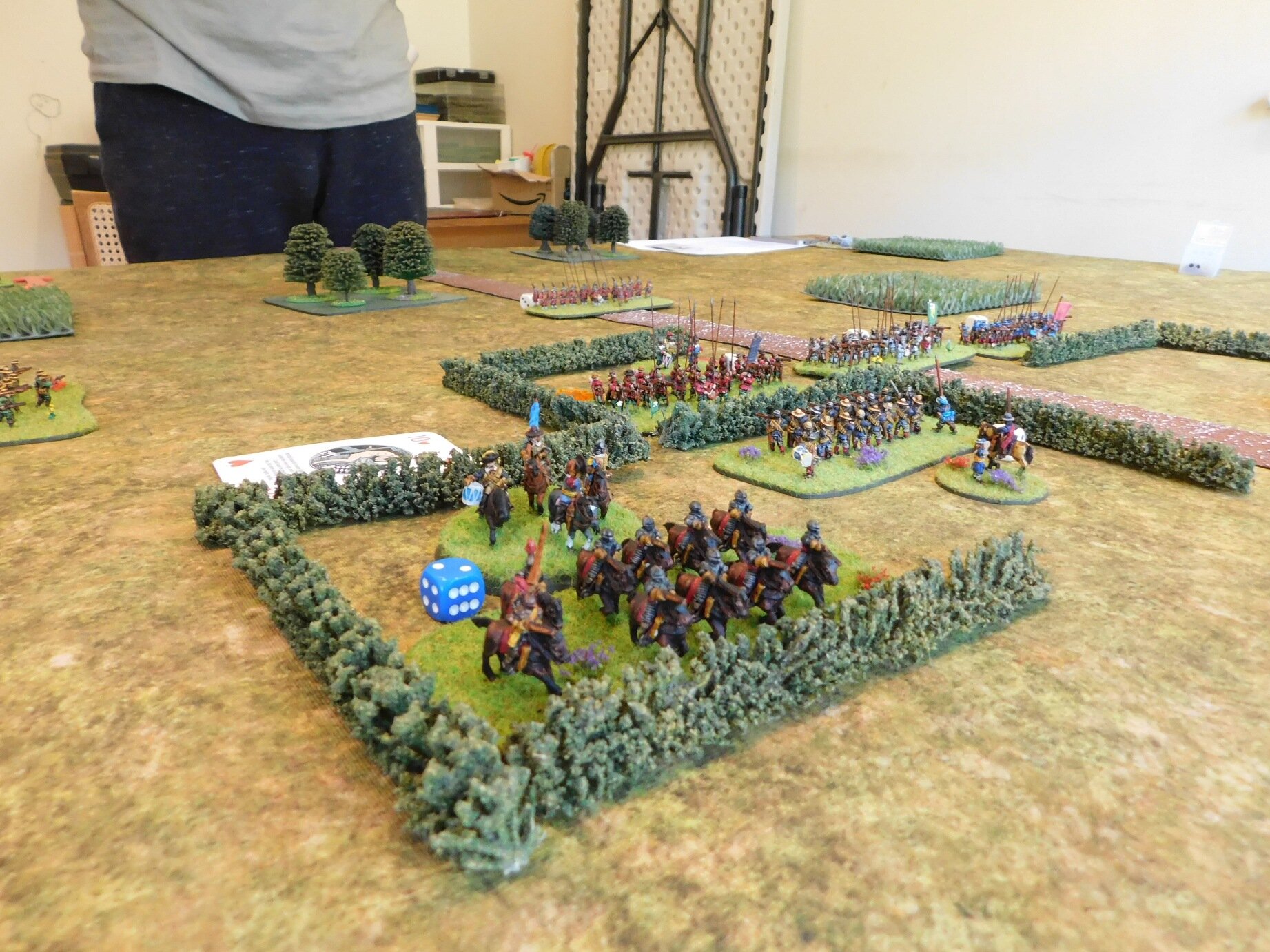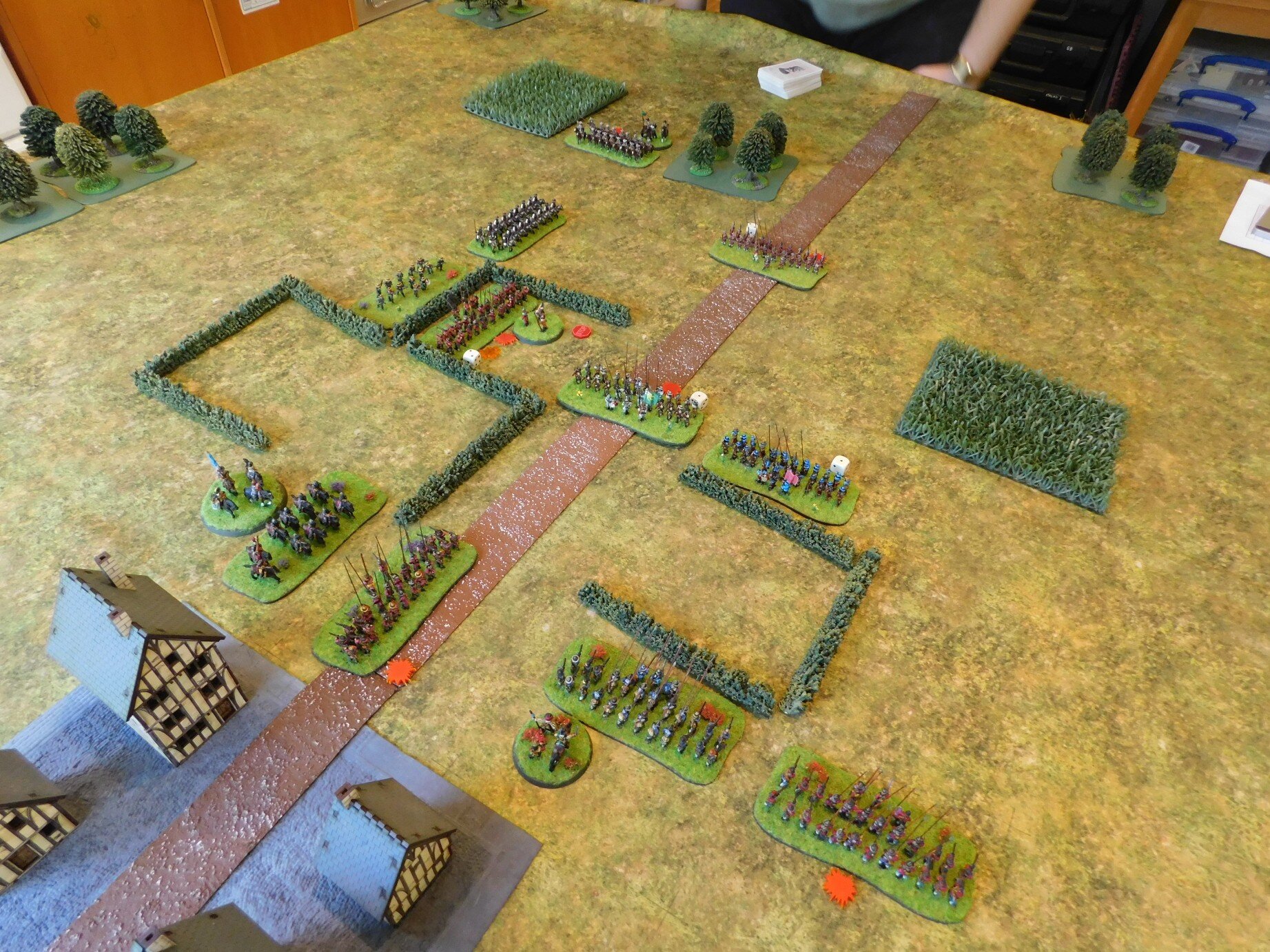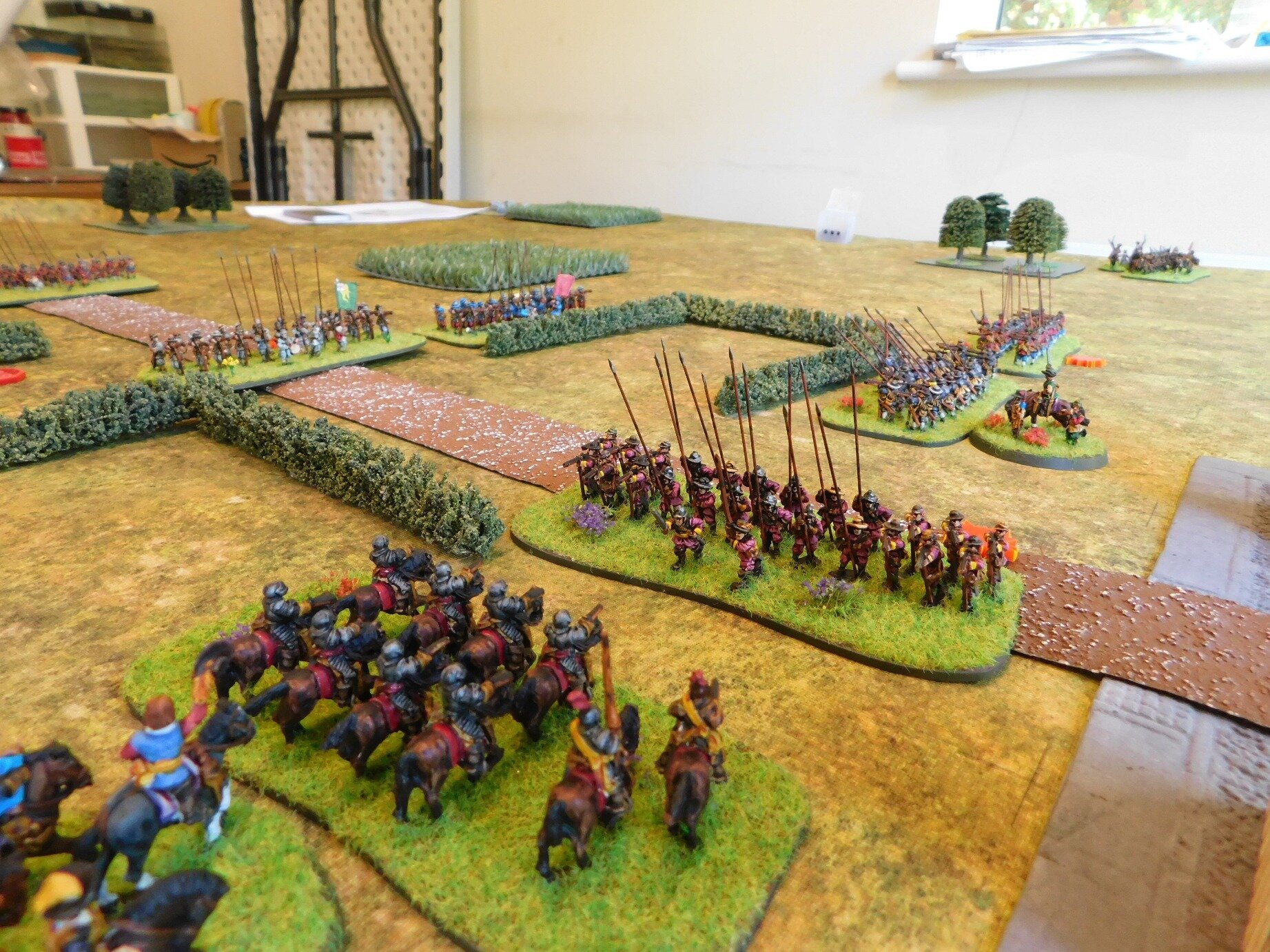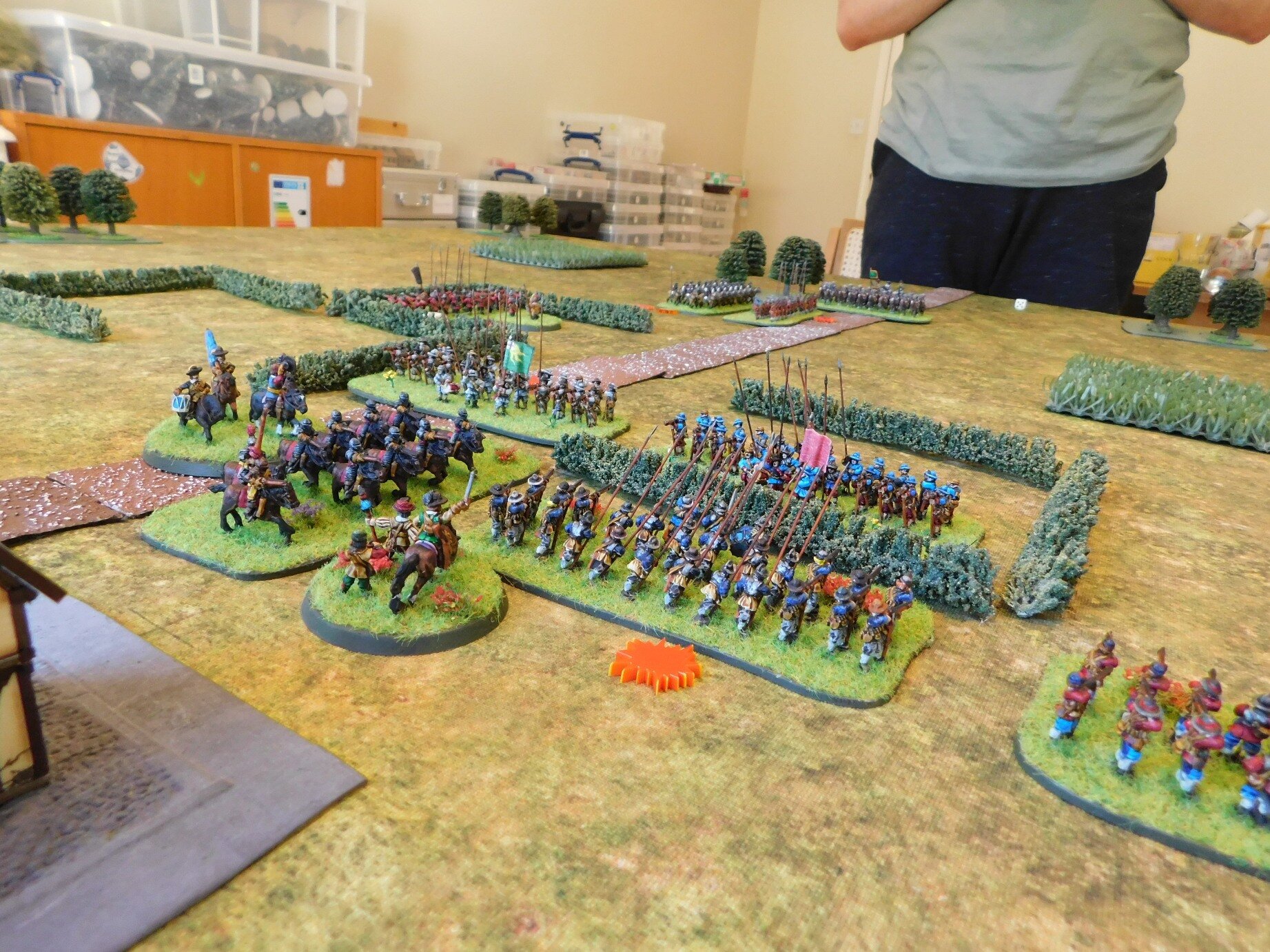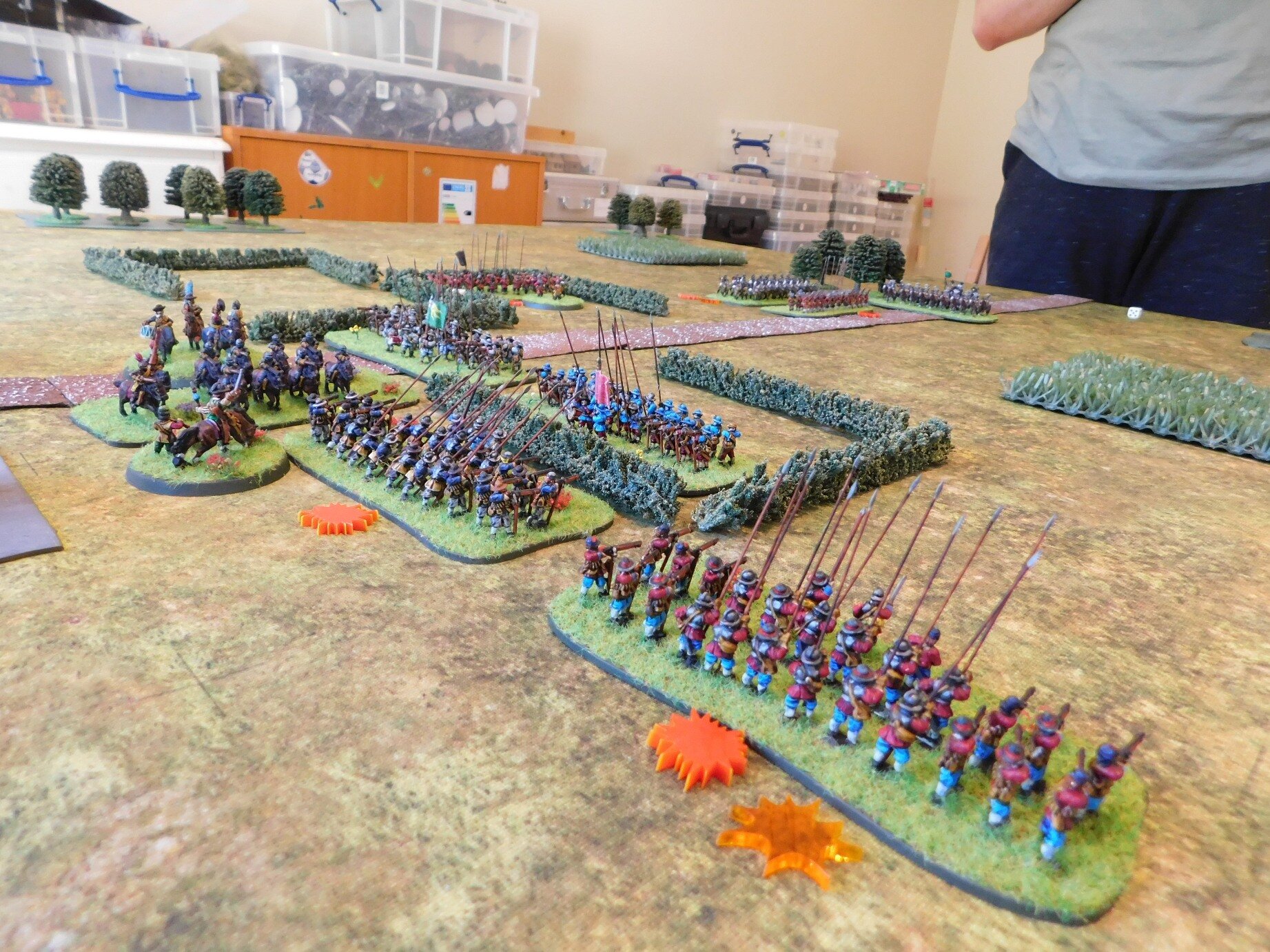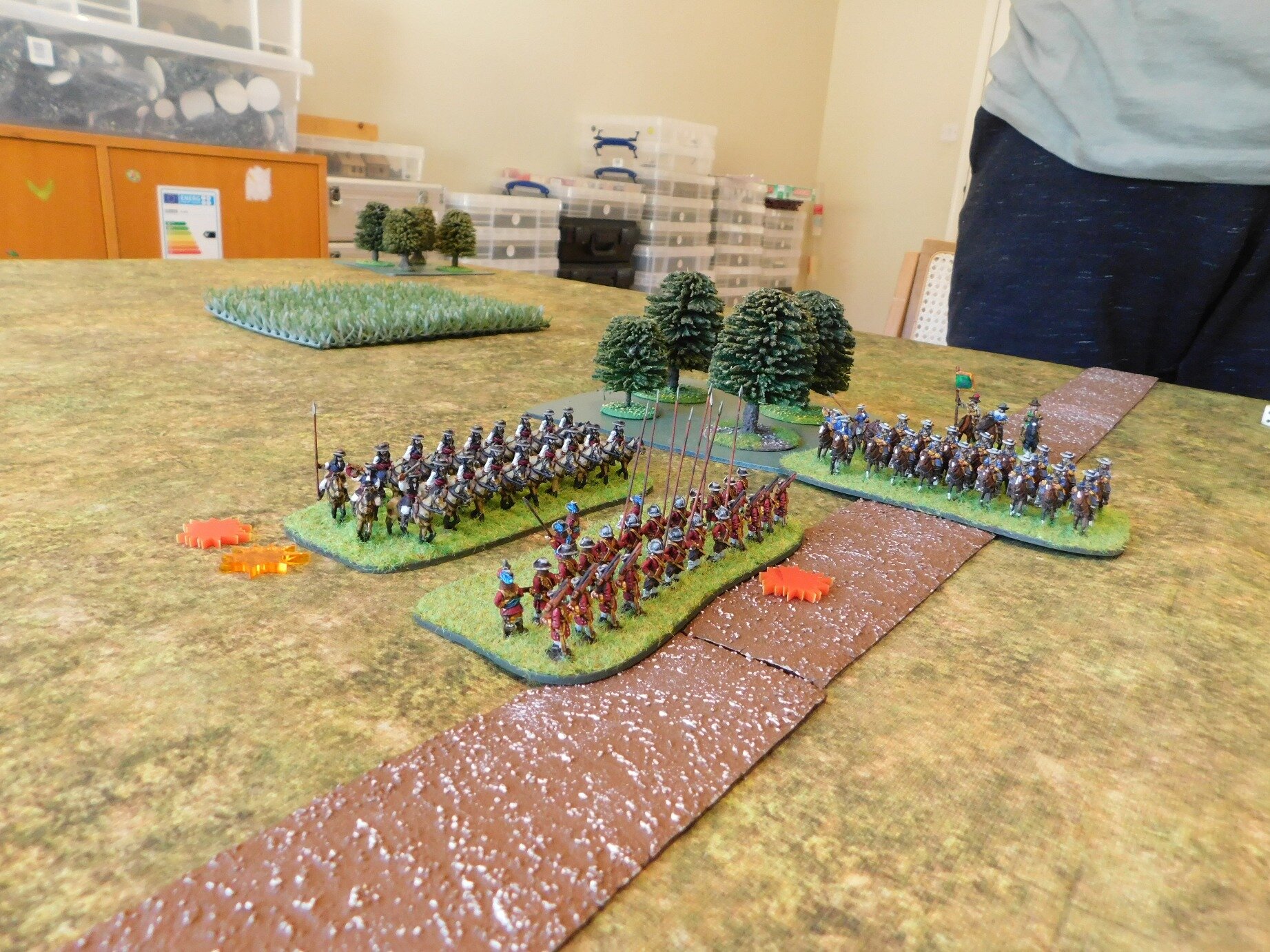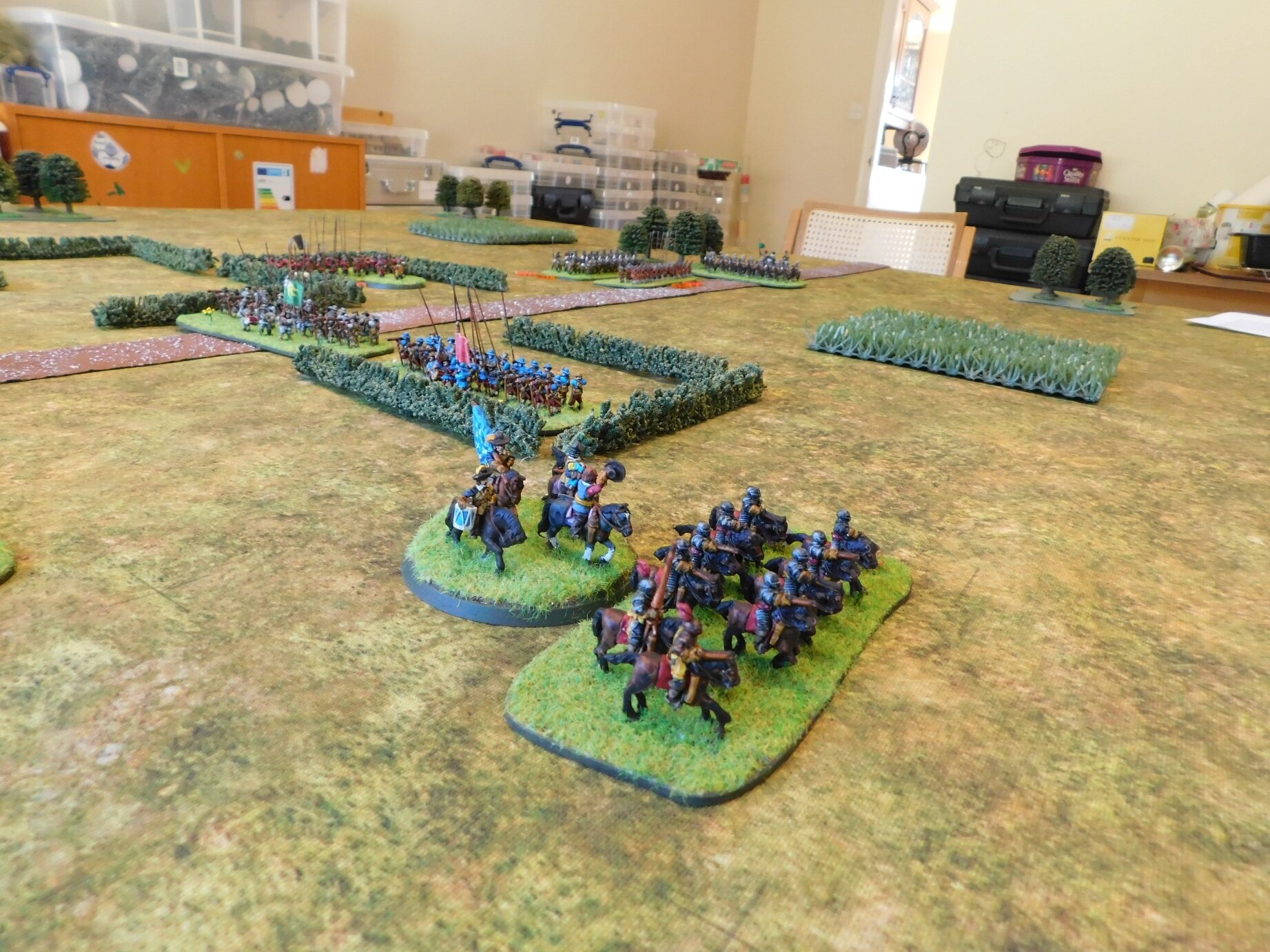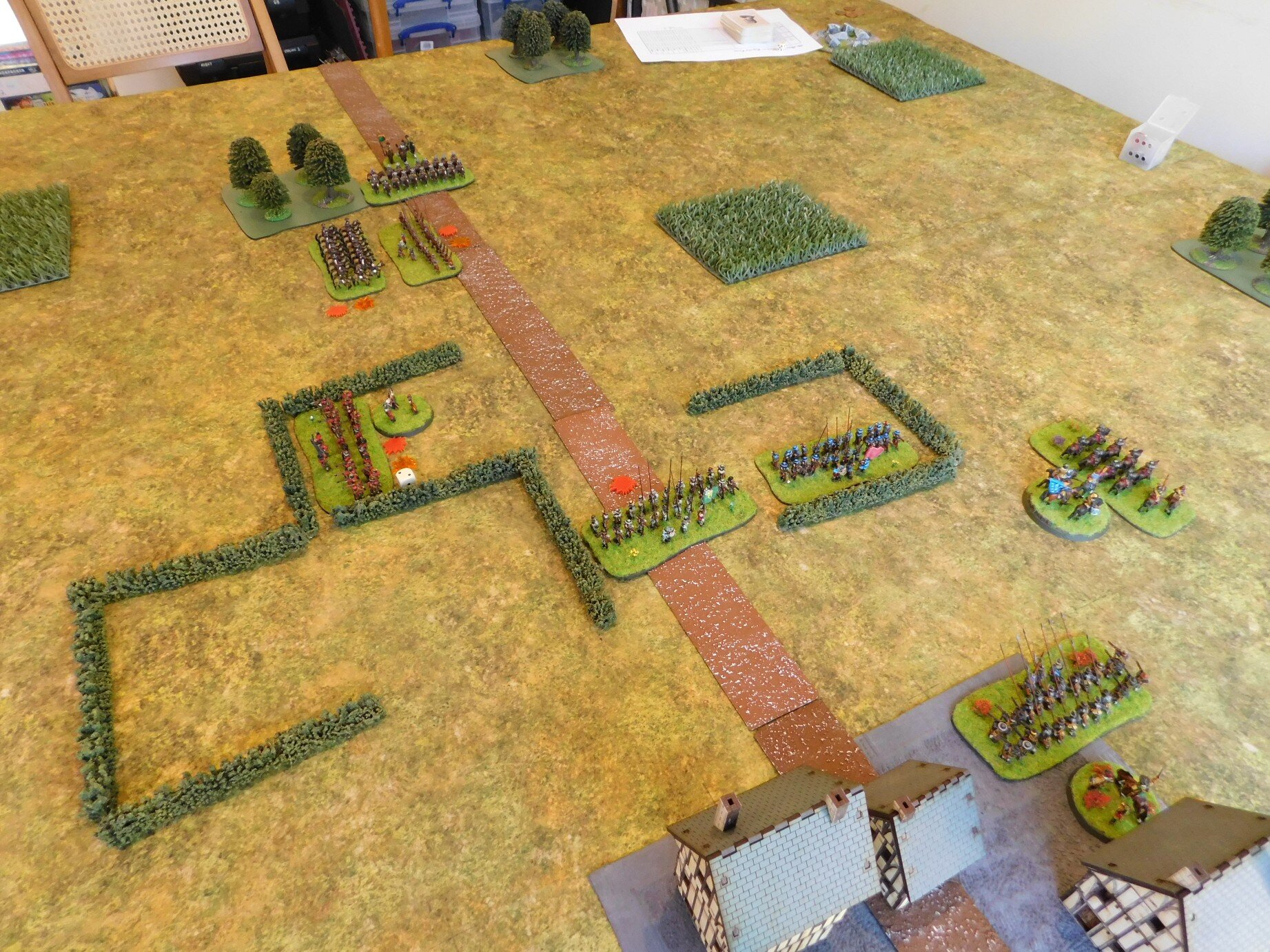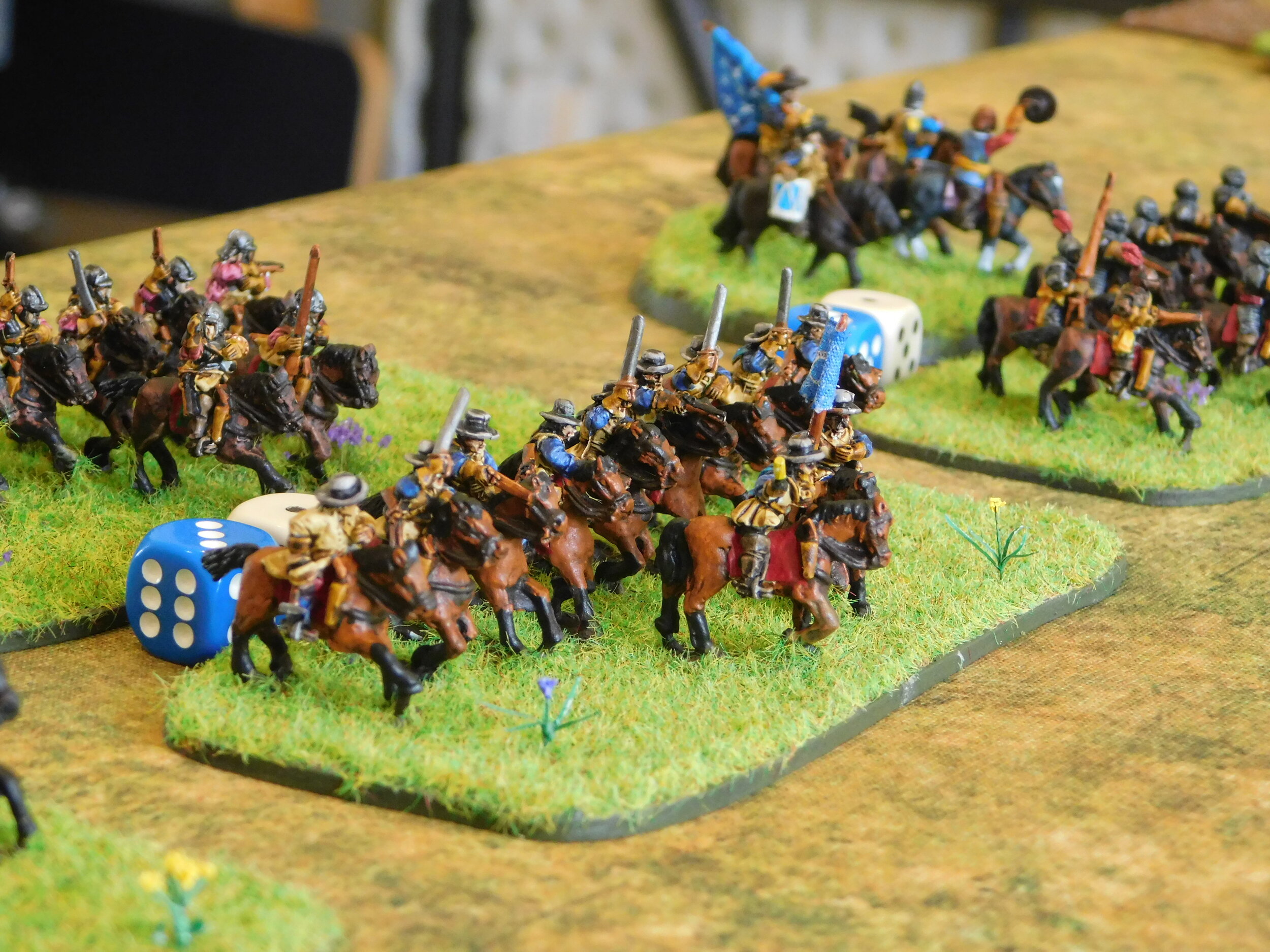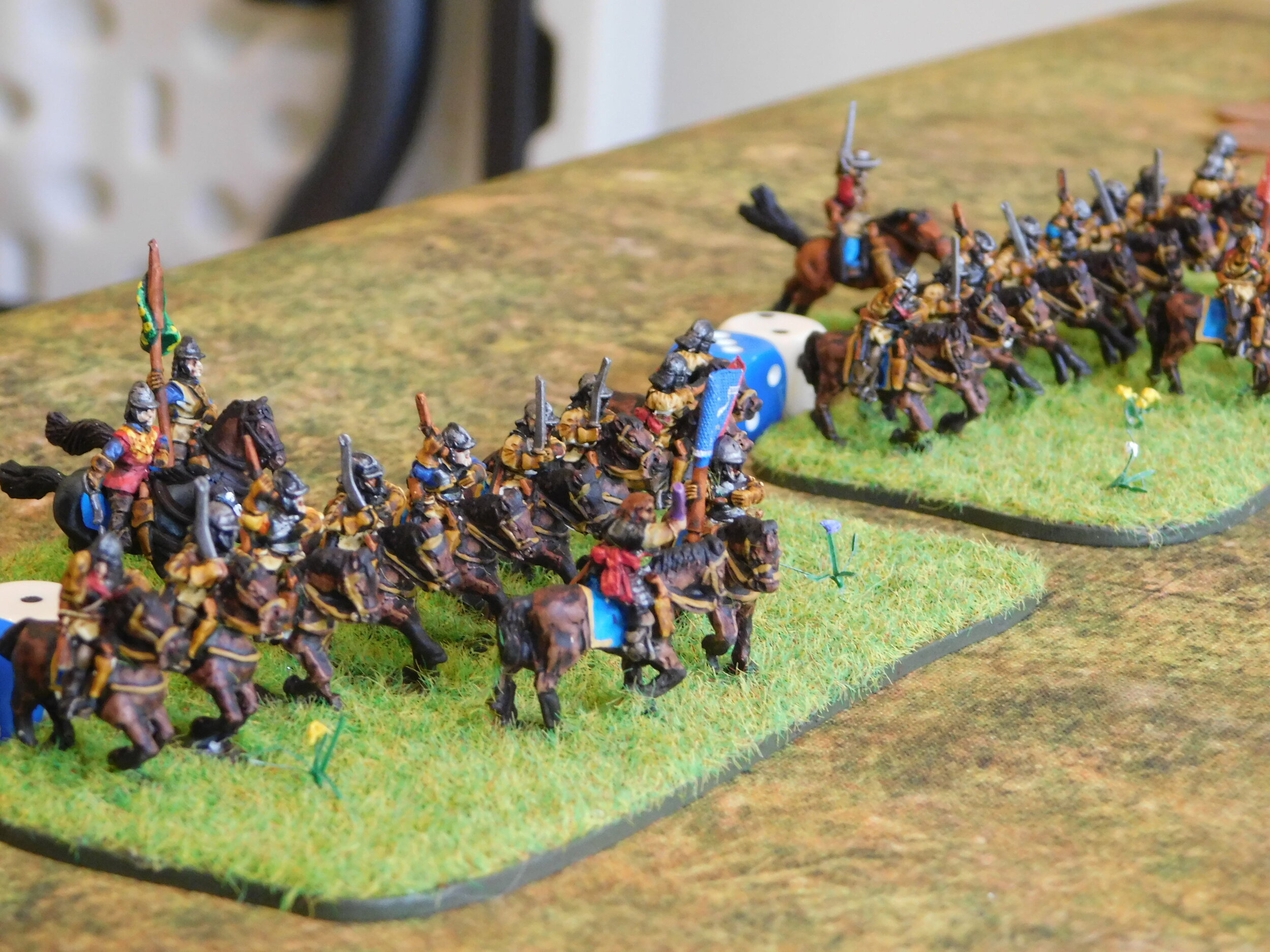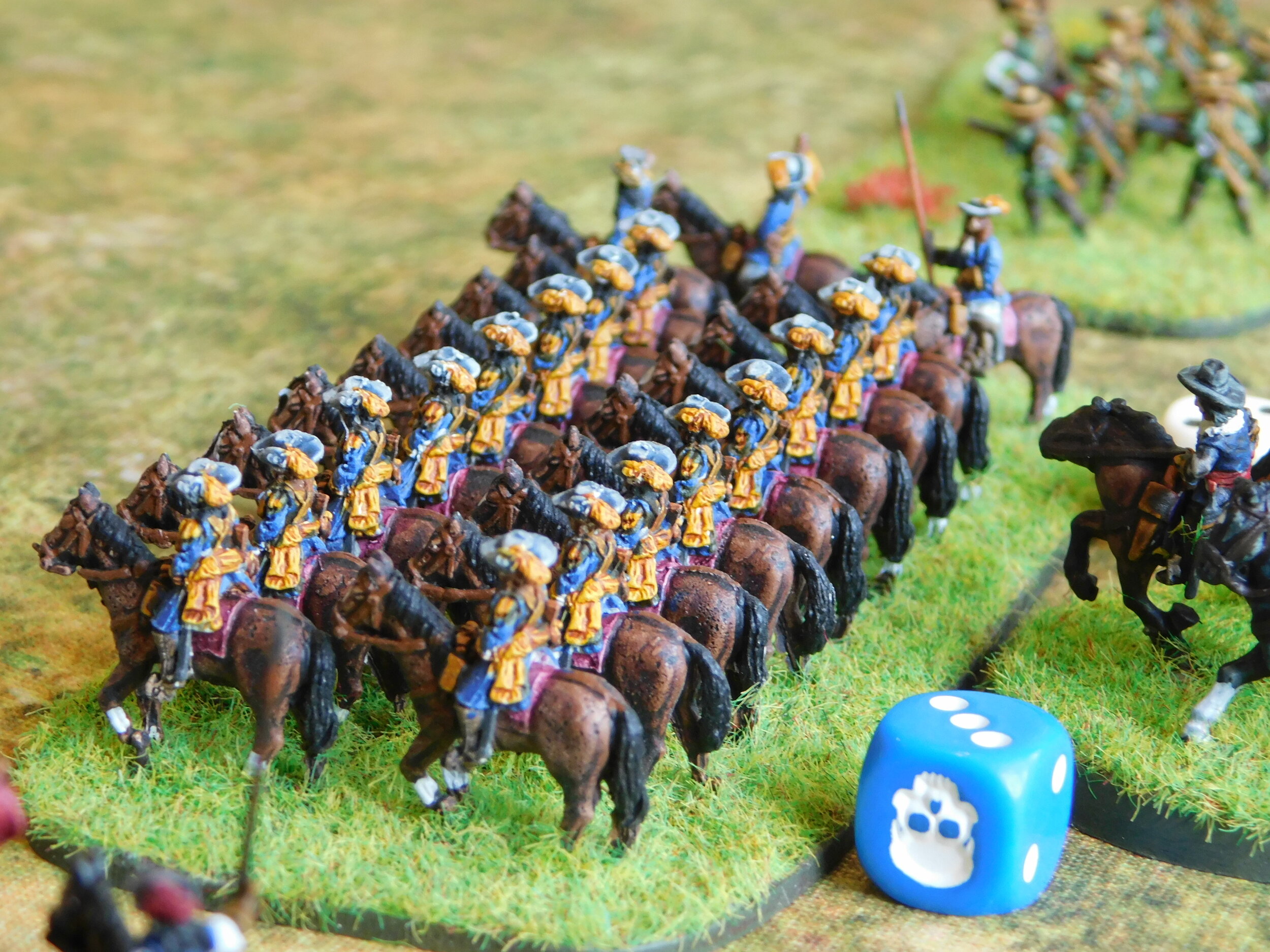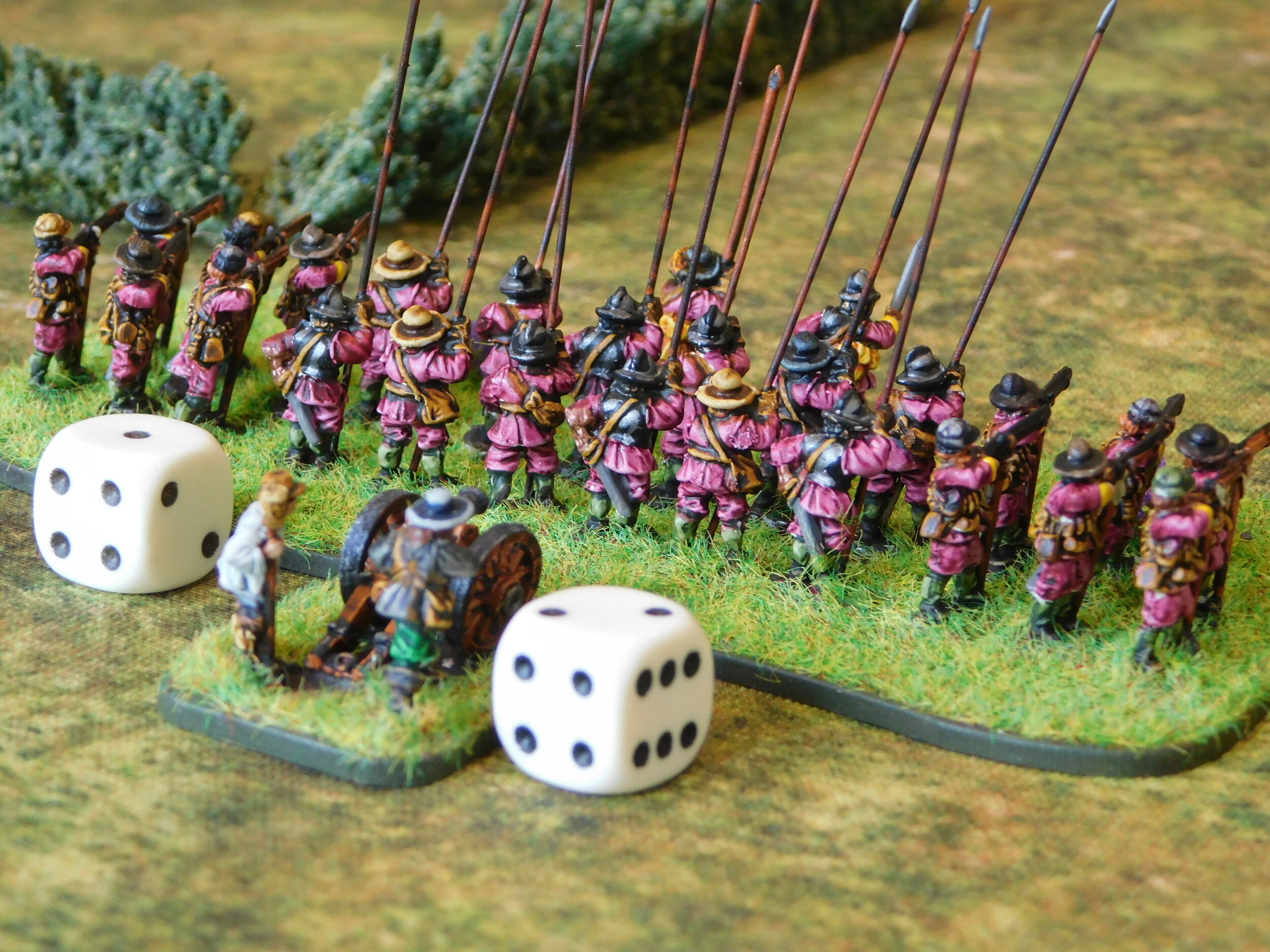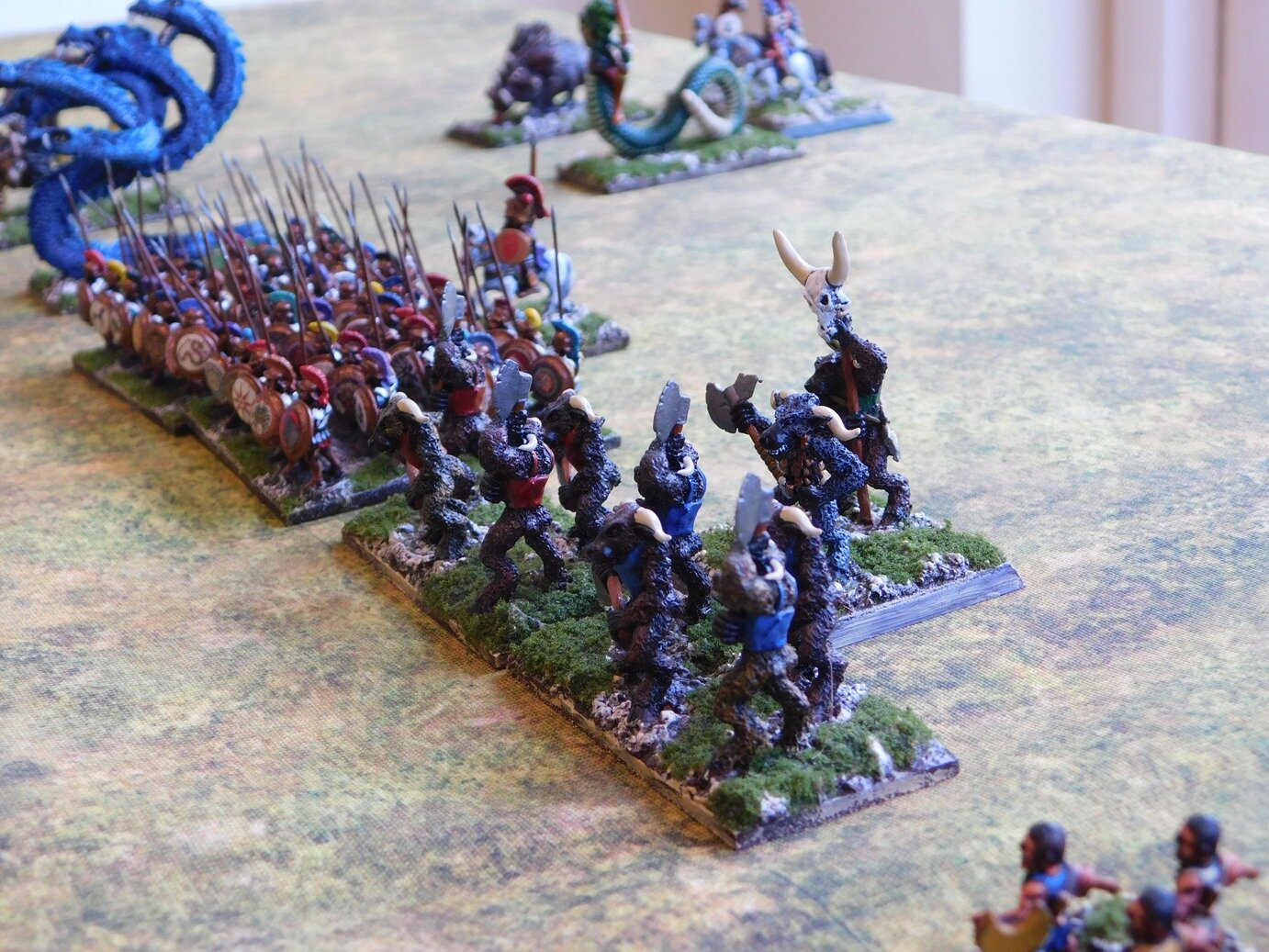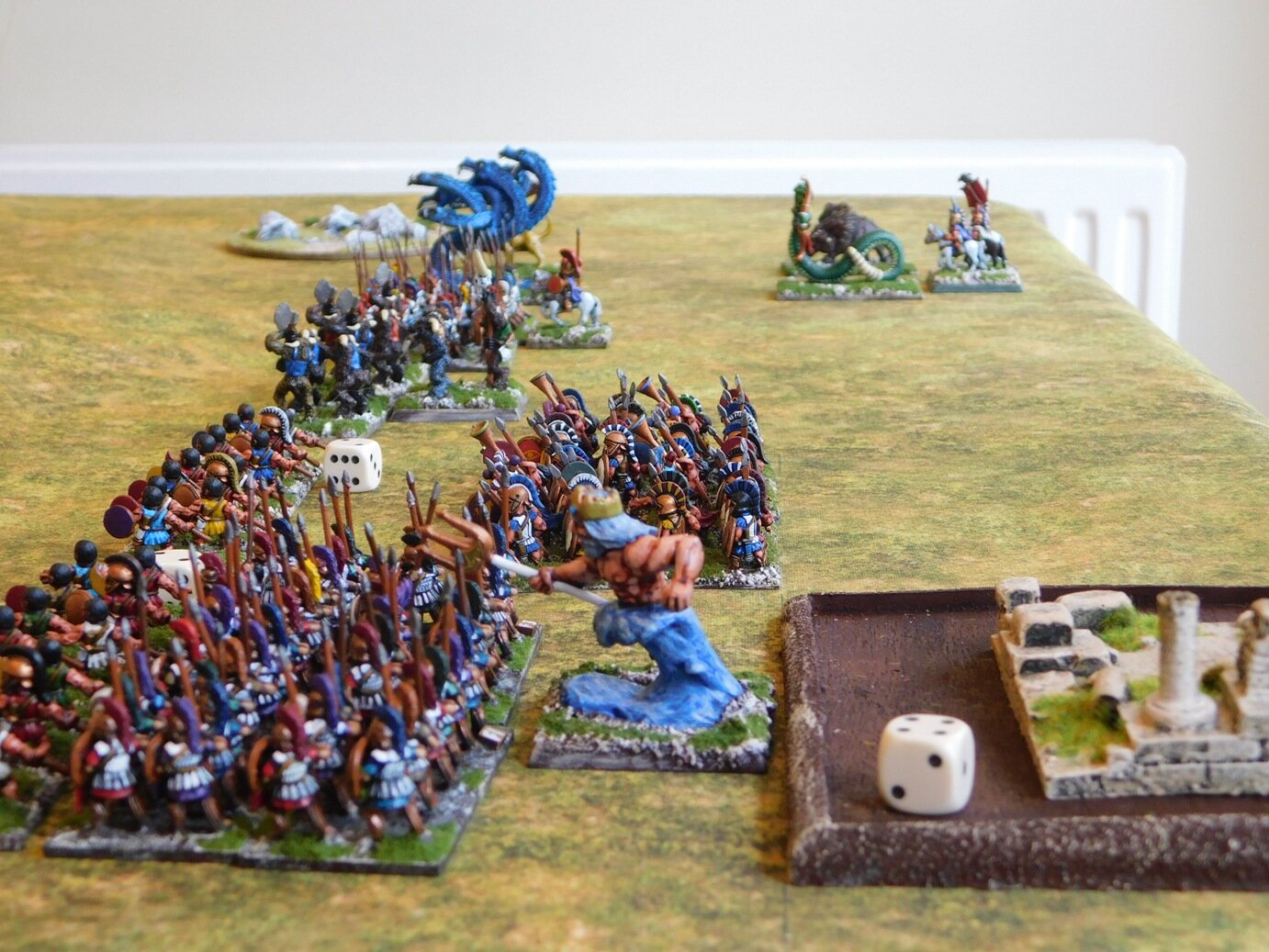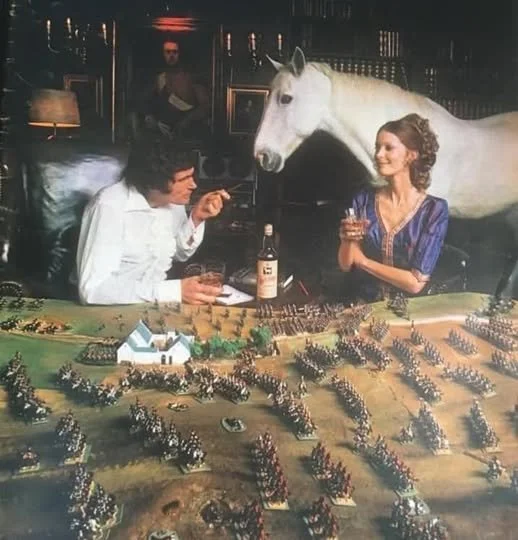FK&P AAR: Widbrooke Common
/With lockdown easing, K. (daughter #1’s boyfriend, trapped with us for the duration, now a keen wargamer) was able to travel back to his native Ireland, so it was with a heavy heart that I took the news that he was going to visit his mother for three weeks. This was serious stuff: who was going to do the cooking and, obviously more importantly, who was I going to wargame with?
We decided to see him off with the next For King & Parliament English Civil War scenario in my North Wessex campaign.
For this encounter, the Parliamentarians under Sir Christopher Grey have discovered that the well-drilled and armed Royalist foot that did them so much damage last battle have been requisitioned by the King and sent to fight further west. This leaves Sir John Boulters, Royalist commander around Maidenhythe, very short of infantry: he must now rely on hastily recruited farmworkers from the Cookham area. Sir Christopher now leads his men towards Maidenhythe, seeking to take advantage of his erstwhile friend’s shortage of good quality foot. Grey’s men are strengthened both by reinforcements and a supply of arms and ammunition, including a couple of cannon. The two forces will meet half way between Cookham and Maidenhythe, at Widbrooke Common.
The set-up from the Parliamentarian side
And from the Royalist side
The Royalists have their back to a small splash-across stream. They have brigades of seasoned horse on either flank, and their untried, pike-heavv foot in the centre. Finally, they have a Forlorn Hope in the farmhouse on the right hand side of the field.
The Royalist infantry (the smoke markers represent an Untried unit yet to test for first-time nerves)
The Parliamentarians are just coming on to the common from the farmland immediately south of Cookham. Their Dutch horse has secured their right flank, half their foot is busy deploying in the centre, with the other half still in the process of arriving on the left flank. Their cannon have set up on or near the road: the common looks a bit soft for the guns!
The Parliamentarian Horse
The Parliamentarian Centre
The Battle Begins
One unit of Parliamentarian horse advanced forward quickly, the other two inexplicably lagging behind. This advanced unit was met by the three squadrons of Cavalier cavalry, also advancing strongly. In the resultant clash, the Parliamentarian horse was swept from the field, but one unit of Royalist horse had been lost, and another had set off in hot pursuit of their fleeing foe.
Note that the lost Parliamentarian cavalry squadron was my newly painted Dutch Horse unit, thus proving the adage that a unit never performs well on its first outing on the tabletop!
Meanwhile, the Royalist infantry advanced forward strongly, and the Parliamentarian foot on the left flank joined battle with the Royalist Forlorn Hope in the farmhouse.
Opening Stages
The main action continued with the cavalry. The pursuing Royalists ran over the Parliamentarian Dragoons, who had inexplicably pushed their way through the hedge in front of them rather than hiding behind it. This left the Royalists still in pursuit, jumping the hedge themselves as they headed off table to the Roundhead rear.
“That Be a big hedge, Jethro!”
Meanwhile, the other Parliamentarian horse had finally worked out how to get their steeds to go forward, and crashed in to the other remaining Royalist squadron. Honours were even in this fight, with each side losing a squadron, but that left one unit of Roundhead cavalry in a superb position behind the main Royalist infantry line.
Big problem for the Royalists!
Fortunately the Royalists had a reserve in the form of Sir John himself at the head of his Cuirassier Bodyguard. As the two infantry lines came together, Sir John led his loyal lobsters forward: outnumbered two-to-one.
This was actually an epic encounter, as Sir Christopher Grey was also at the head of his Cavalerie. The two commanders were therefore leading their horse directly against each other!
This proved a good move tactically, but a disaster for Sir John himself: seriously wounded in the clash that followed, he was carried from field, close to death, his Cuirassiers fleeing around him pursued by the Roundhead cavalry. History, unfortunately, does not record whether the two former friends actually met each other in the melee.
Worse was to follow. Although on the other side of the field the other Royalist horse had managed to flank charge a battalia of Untried Parliamentarian militia, the boys from Medmenham proved a tough nut to crack: quite frankly refusing to break no matter what the Royalists did.
The first flank charge goes in!
And worse! In the centre, the Untried Royalist foot wavered at the sight of the Roundhead foot in front of them, doubtless also unnerved by the fall of Sir John. Gradually the Royalist line began to bow backwards, and then suddenly broke: all victory coins gone. The Roundheads had won the day!
Just before the Royalist line broke
Aftermath
A great battle, and a suitable victory for K. as he heads off home.
The Untried Royalist foot proved no match for the seasoned Parliamentarian battalia, but it was really the two cavalry actions that decided the day. On the Royalist left, honours proved even with both sides losing the same number of units, but the Royalist horse left the field in pursuit whereas the Roundheads managed to rally and found themselves nicely behind the Cavalier line. On the Royalist right, the cavalry should have KO’d at least one of the infantry battalia they hit in the flank, but just couldn’t quite break them: they breed them tough in Medmenham.
But it was the wounding of Sir John and the dispatch of his Bodyguard that really did for the Royalists. It was an encounter that could have gone either way - a small but veteran Cuirassier unit versus a much larger but less protected Dutch horse squadron - but, as it was, the clash, and therefore the battle as a whole, went to Parliament.
Robert Avery



